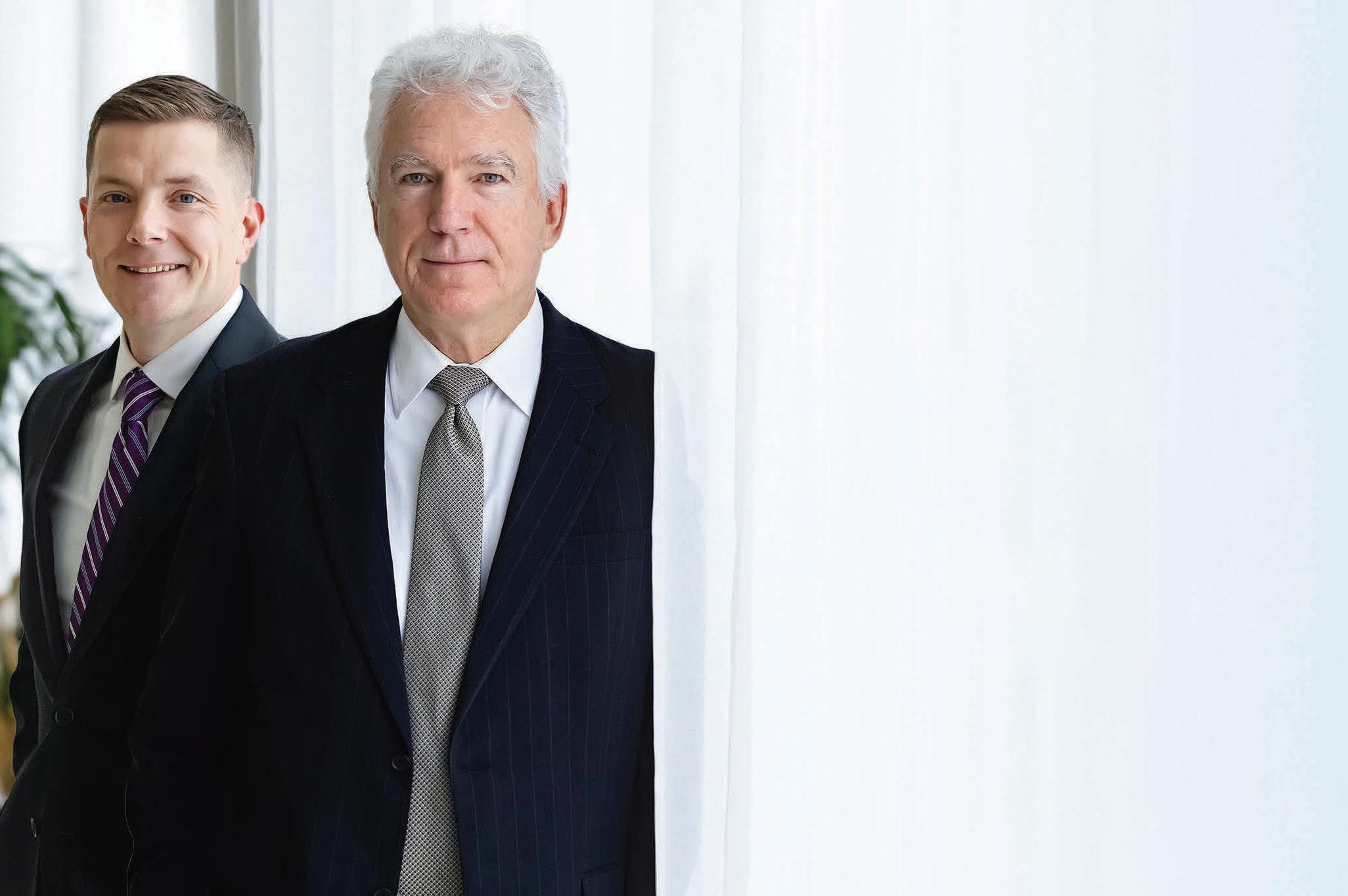
























The numbers speak for themselves... ...And so do their clients.
Team TVA+RLA’s expertise, connections and professionalism are topnotch, and it is clear they are leaders in the Real Estate industry.
-Bloomfield Seller


















































































OAKLAND COUNTY BAR ASSOCIATION
1760 S. Telegraph Road, Suite 100
Bloomfield Hills, Michigan 48302-0181 (248) 334-3400 • FAX (248) 334-7757 www.ocba.org

PRESIDENT
Dean M. Googasian
Sarah E. Kuchon
Aaron V. Burrell
TREASURER
Kari L. Melkonian
SECRETARY
Victoria B. King
EXECUTIVE DIRECTOR
Jennifer Quick
LACHES EDITORIAL BOARD
Victoria B. King
Syeda F. Davidson
Coryelle E. Christie
DIRECTORS
Syeda F. Davidson
Julie L. Kosovec
Emily E. Long
Jennifer L. Lord
Moheeb H. Murray
Kimberley Ann Ward
Kenneth F. Neuman
Layne A. Sakwa
Jonathan B. Frank
Silvia A. Mansoor
ABA DELEGATE
James W. Low
Lanita Carter
Thamara E. Sordo-Vieira
THE MISSION OF THE OAKLAND COUNTY BAR ASSOCIATION IS TO SERVE THE PROFESSIONAL NEEDS OF OUR MEMBERS, IMPROVE THE JUSTICE SYSTEM AND ENSURE THE DELIVERY OF QUALITY LEGAL SERVICES TO THE PUBLIC.
Articles and letters that appear in LACHES do not necessarily reflect the official position of the Oakland County Bar Association, and their publication does not constitute an endorsement of views that may be expressed. Readers are invited to address their own comments and opinions to:
LACHES | Oakland County Bar Association 1760 S. Telegraph Rd., Ste. 100 Bloomfield Hills, MI 48302-0181
Publicationandeditingareatthediscretionoftheeditor.
LACHES (ISSN 010765) is the monthly (except July and December) publication of the Oakland County Bar Association, a Michigan nonprofit corporation, 1760 S. Telegraph, Ste. 100, Bloomfield Hills, MI 48302-0181. Copyright © 2025 Oakland County Bar Association. The price of an annual subscription ($20) is included in member dues. Periodical postage paid at Bloomfield Hills, MI 48304 and additional entry offices. Postmaster: Send address changes in writing to Oakland County Bar Association, 1760 S. Telegraph, Ste. 100, Bloomfield Hills, MI 48302-0181.

Bridging the Gap: How Legal Nurse Consultants Transform Medical Malpractice Cases
LNCs provide critical medical expertise to attorneys across diverse legal domains. By
Alison Brandt
Health Care Provider Reimbursement: Audit Landscape and the Role of Legal Counsel
Attorneys can be essential to addressing audits and attendant risks, as well as to assisting with monitoring risk areas.
Medical Malpractice & Artificial Intelligence: Where Are We? What does the law tell us about AI’s involvement in the practice of medicine, and what does the future hold?



By Dean M. Googasian

Irecently had the pleasure of addressing a group of recent bar passers at the mass swearing-in ceremony in the Commissioners Auditorium at the courthouse. If you haven’t attended one of these ceremonies in a while, I encourage you to do so. There is something both life-affirming and reinvigorating about seeing the proud faces of new lawyers and the prouder faces of their families as they embark on a hard-earned career. Oakland County Clerk Lisa Brown administered the Lawyer’s Oath, Chief Judge Jeffery S. Matis swore them in, and retiring Circuit Judge Phyllis McMillen gave thoughtful remarks reminding the new lawyers the importance of the oath they had just taken.
I told the new lawyers that which I believe: Each of us lawyers is, at bottom, our own small business. Regardless whether we go to work for the courts, work for the prosecutor’s office, hang out a shingle taking appointments, join a firm, or work in public service, we are all, always, our own business and we have to build our brand. I told them that joining the OCBA and more — becoming involved in the OCBA — is a wonderful way to establish oneself in the practice.
I firmly believe that the OCBA is a great place to build a law practice. It is a wonderful resource. But fewer lawyers are taking advantage of that resource than in the past.
At its peak in 1995, the OCBA’s membership topped out at just over 3,400 members. In 2016, membership numbers fell below 3,000, and we haven’t exceeded 3,000 since. Today, our membership is right around 2,200 members.
This trend in bar membership is not new. An article from five years ago described the situation facing many voluntary bar associations back in 2018: “A job-crushing economic recession, a 30-percent plunge in law school enrollment, and challenges reaching a new generation of lawyers have all contributed to steadily declining membership at many bars.”1 And that was before the COVID-19 pandemic.
Like many voluntary organizations, we took a hit during COVID, of course. That was to be expected. With hard work from our Mem-
bership Committee, and its recent chairs Julie Kosovec and Moheeb Murray, and guidance from Deputy Director of Membership Katie Tillinger, our membership numbers rebounded to pre-COVID levels.
Those numbers fell a bit this past year. Nothing drastic, but it appears to be a continuation of the larger trend among voluntary bar associations (and more broadly among voluntary trade associations across industries) throughout the country.
We’re not alone. The American Bar Association once boasted that more than half of all lawyers in the United States belonged to the ABA. Today, reports indicate that less than 20% of lawyers are ABA members. Over the decade between 2009 and 2019, the ABA lost approximately 56,000 dues-paying members. This resulted in major changes in the ABA’s membership structure and offerings. The New York State Bar Association, citing a decline in membership, recently proposed a revised fee structure to change to more à la carte-style offerings. Similar examples exist across the country and across industry organizations.
The reasons for the changes to membership
numbers are many, multifactorial, and likely variable across populations. Some likely have little to do with the OCBA and what we offer.
For one, lower membership numbers would appear to be a natural result of lower numbers of law school graduates. Law school enrollment is down. One entity, LawHub, reports that law school enrollment has declined about 28% in the last decade. After enrollment peaked at over 52,000 1Ls in 2010, it has declined to only2 37,800 1Ls enrolled in 2023. Michigan has seen more than its fair share of decline. Law school enrollment within our state has declined more than 32% in the last decade. Fewer law students means fewer lawyers. Fewer lawyers means fewer potential members for organizations like ours.3
But lower numbers of attorneys likely isn’t the whole story. In addition to fewer lawyers overall, in talking to folks about this, we’ve noticed there appears to be a general belief (at least among older lawyers) that newer lawyers simply aren’t “joiners.” That is, there was a time when it was expected that one would join the ABA and a local bar association, and perhaps an affinity bar, and regularly attend bar events. But there
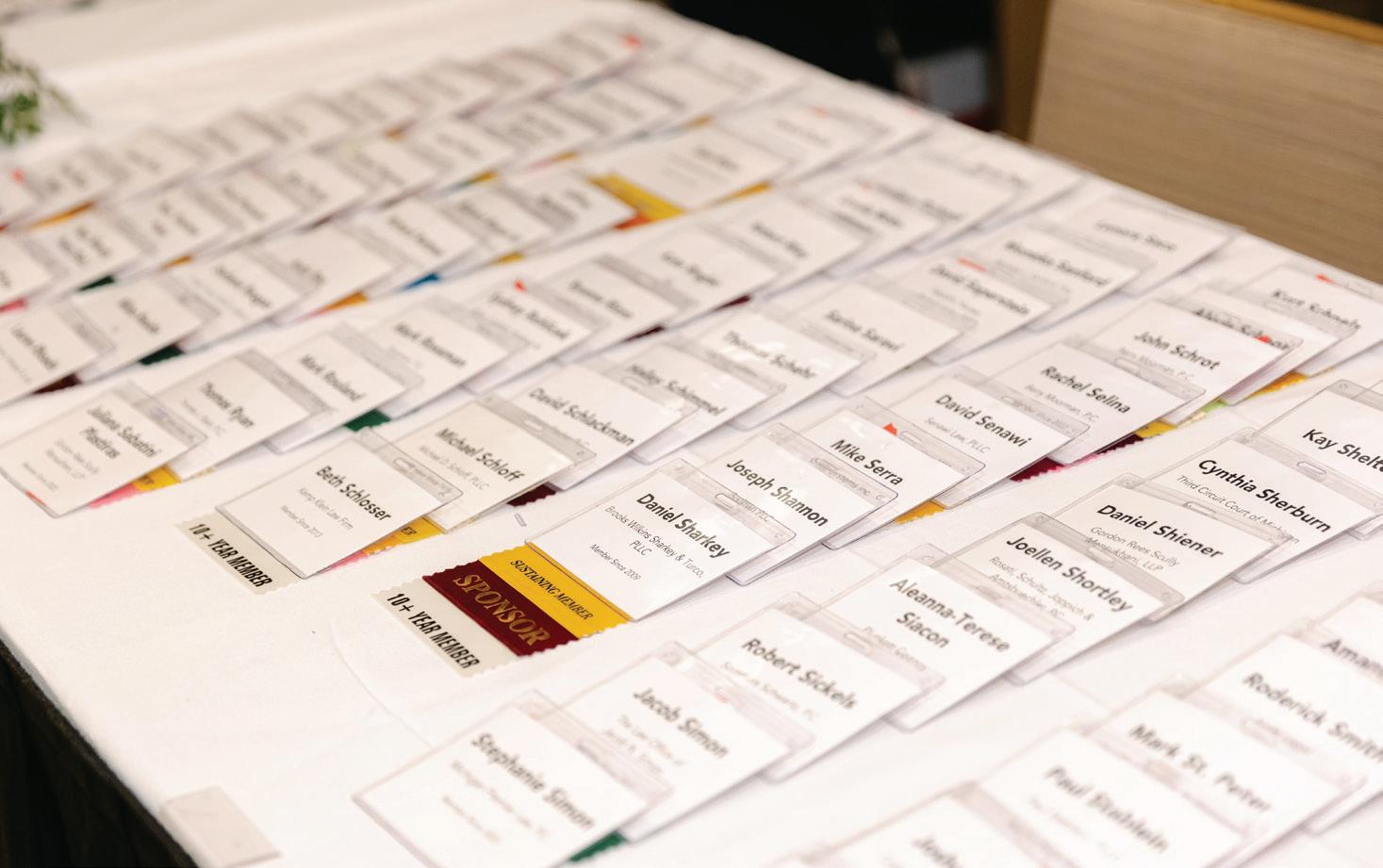
are different expectations today. Or perhaps it is more accurate to say that newer lawyers may have different interests.
Your OCBA — including our outstanding OCBA staff; dedicated Membership Committee and its chair, Jacob Kahn, and vice chair, board member Syeda Davidson; board; and New Lawyers Committee — is working on this issue. As a board and as an organization, we are making it a priority to ensure the OCBA continues to provide value that our members are looking for so that all members, whether new to the practice or nearing the end of their careers, receive a return on their investment of time and money in OCBA membership. To that end, we have hired an outside consultant to assist in conducting qualitative and quantitative research to collect the necessary information to help shape important decisions about the programs, services, and structure of the OCBA.
Here are a few of the other steps being taken:
• Tracking of membership numbers. Katie Tillinger tracks membership numbers almost daily.
• Membership Maximizers. We offer Membership Maximizers to give newer members information about what the OCBA has to offer them.
• Direct contact with new members. All new members to the OCBA are welcomed with direct contact to encourage them to get involved. We know those who get involved tend to stay involved.
• Direct outreach to those who don’t renew. We reach out to members who haven’t renewed to encourage them to do so. is is done in many different ways, including personal outreach from board members and committee members they know. I signed hundreds of letters this past fall encouraging folks to renew. Many did.
• Exit interviews for nonrenewed members. And for those who choose not to renew, we reach out to try to find out the reasons so we can improve our offerings and make the OCBA more desirable.
• Personal outreach to encourage attendees to join. When nonmembers attend our events, they receive personal outreach to encourage them to join.
• Leadership roles in the New Lawyers Committee. e OCBA’s New Lawyers Committee gives newer attorneys opportunities for engagement and leadership roles quickly. Other committees as well allow newer attorneys and newer members opportunities to lead.
• Involvement. Members who engage and are involved, whether in committee work, by attending events, or in our awardwinning Inns of Court program, tend to stay involved and renew. Our Membership Committee works hard to engage members to get involved and stay involved.
• Expanded membership categories. We have expanded our membership categories. Now, in addition to regular membership, we have Member Prospects, who are new to the practice of law and receive one year of free membership to encourage them to join and get involved. New members have access to discounted rates to attend events, and there are numerous events, like Meet the Judges, that cater directly to newer lawyers looking to network and learn. We offer Life memberships at reduced rates for those who are retired from the practice of law but want to stay involved. We have instituted Public Service memberships at reduced rates to encourage membership among those attorneys who work in the courts, prosecutors’ offices, and other governmental agencies.
• Varied member events and professional development o erings. e OCBA is also working toward expanding the types of member events we offer to appeal to a broader audience and enhancing our professional development seminars and opportunities.
We’re working hard at each step to attract and engage members. But there is lots of work left to do. We could certainly use your help and good ideas. If you have thoughts on how we can improve, let us know.
My thanks to Katie Tillinger, our intrepid deputy director of membership, for her assistance with this article and for her many years of dedication to our organization.

Dean M. Googasian is the president of the Oakland County Bar Association.
Footnotes:
1. americanbar.org/groups/bar-leadership/ publications/bar_leader/2018_19/novemberdecember/knocking-on-all-the-doors-andrethinking-everything-new-approaches-to-barmembership.
2. go.marketinggeneral.com/l/733823/2024-07-02/bq1 hhk/733823/1719926670Yz6osB62/The_2024_ Membership_Marketing_Benchmarking_Report.pdf.
3. lawhub.org/trends/enrollment-by-state.















By Jennifer Quick

Each year, I take a moment to spotlight the OCBA’s Sustaining Member program — not only to acknowledge the members who generously participate but also to emphasize the vital role this program plays in our organization’s success. e funds raised through Sustaining Member dues are essential to the ongoing operations and growth of the OCBA.
Established in 1987, the Sustaining Member program was created to allocate resources specifically for technology and infrastructure upgrades. By design, at least 50% of the funds raised annually must support these critical improvements. Over the years, these contributions have enabled us to upgrade the District Court Case Evaluation software and member database, renovate the OCBA offices, and enhance the audiovisual equipment in our Learning Center.
Without the support of Sustaining Members, addressing unexpected challenges — like replacing aging computer systems — while keeping membership costs affordable would be nearly impossible.
e past few years have presented significant challenges for the OCBA. Changes to
court rules related to case evaluation resulted in a decline in cases referred to the OCBA’s District Court Case Evaluation service. However, thanks to the support of Sustaining Member funds, the OCBA has been able to adapt by investing in advanced software and skilled personnel to develop and introduce a new mediation service for district courts across Oakland County.
e evolving needs of attorneys and OCBA members, particularly since the pandemic, have also required us to reassess and adjust our programs and services. While we’ve implemented some changes, there is still work to be done. Recently, the OCBA utilized Sustaining Member funds to hire a marketing and nonprofit consultant to conduct both quantitative and qualitative research. is research aims to better understand the current needs of our members and guide the development of future programming.
is data-driven approach is critical to ensuring that the OCBA continues to deliver meaningful value to its members while advancing the legal profession. Sustaining Member contributions remain an essential part of our ability to adapt and thrive in the face of
change, underscoring their importance to our shared success.
In recognition of their support, Sustaining Members enjoy:
• Special acknowledgment at OCBA events.
• Prominent listing on the OCBA website.
• Periodic recognition in LACHES.
• Invitations to an exclusive recognition event held each fall.
We invite you to join the over 350 Sustaining Members who support this vital initiative. For the remainder of the 2024-25 bar year, you can become a Sustaining Member for just $50 — that’s half off the normal amount.
Your contribution will help ensure the OCBA remains Michigan’s premier voluntary bar association, providing the resources and services our members deserve.
To join the program, you may contact Katie Tillinger at ktillinger@ocba.org or (248) 3343400 or complete the application found at ocba. org/sustaining

Jennifer Quick is the executive director of the Oakland County Bar Association.
Jody L. Aaron
Ann MacDonald Acheson
Phillip G. Adkison
Joseph A. Ahern
Patrick J. Alandt
Kelly A. Allen
Matthew P. Allen
Margaret C. Alli
Peter M. Alter
David Carl Anderson
David C. Anderson
Hon. Martha D. Anderson
Nicholas S. Andrews
Brooke Lauren Archie
Joshua I. Arnkoff
Hana M. Attar
Alexander A. Ayar
Melinda A. Balian
Brandon R. Barlog
Eric C. Bartley
Laura C. Baucus
Dirk A. Beamer
Thomas A. Benhamou
Caroline Bermudez-Jomaa
Robert S. Bick
Thomas W. Biggers
Roberto Alejandro Bihar
Michael J. Black
Orlando L. Blanco
Sean A. Blume
Brian V. Boehne
Jordan S. Bolton
Sherri L. Bono
Joshua M. Borson
Kenneth M. Boyer
Steven D. Brock
Keefe A. Brooks
Erica Grand Brown
Malcolm D. Brown
Charles D. Bullock
Charity A. Burke
Marty A. Burnstein
Aaron V. Burrell
Donald F. Carney
Jennifer S. Carney
Russell G. Carniak
Robert M. Carson
Meghan W. Cassidy
R. Christopher Cataldo
J. Matthew Catchick Jr.
Gerald P. Cavellier
Thomas R. Charboneau
John P. Charters
Michael S. Clawson
Poncé D. Clay
Howard H. Collens
Sean M. Colonna
Peter L. Conway
Mark E. Crane
Thomas W. Cranmer
Tanya N. Cripps-Serra
R.J. Cronkhite
Hon. Jacob James
Cunningham
James P. Cunningham *Sustaining Members listed above are as of 1/2/2025
John J. Cunningham
Joseph W. Cunningham
Judith K. Cunningham
Jalal J. Dallo
Brad A. Danek
Rebecca S. Davies
Thomas J. Davis
Preston Denha
James G. Derian
Mark B. Dickow
Joseph A. Doerr
Lawrence R. Donaldson
Larry T. Dressell
Alison F. Duffy
Brian D. Einhorn
Sue Ellen Eisenberg
Harry S. Ellman
Marjory W. Epstein
Richard C. Eriksen
Elias J. Escobedo Jr.
Ernest J. Essad
Cameron J. Evans
Walid Y. Fakhoury
Robert Z. Feldstein
Julie I. Fershtman
David H. Fink
Nathan J. Fink
Timothy P. Flynn
John R. Foley
Nicole R. Foley
Audra A. Johnson Foster
Matthew A. Fraiberg
Jonathan B. Frank
Bradley J. Friedman
T. Scott Galloway
Mary Sheila Garin
Karen R. Geibel
Derrick E. George
Jack A. Gibson
Randall J. Gillary
Randi P. Glanz
Gerald J. Gleeson II
Hon. Elizabeth Gleicher (ret.)
Charles G. Goedert
Joel S. Golden
Barry J. Goodman
Dean M. Googasian
George A. Googasian
Deborah L. Gordon
Maxwell Goss
Judith S. Gracey
Paul Green
Sandra User Green
Garry M. Greenberg
Jennifer M. Grieco
Kenneth L. Gross
Renee K. Gucciardo
Lisa J. Hamameh
David L. Haron
Michelle C. Harrell
Andrew M. Harris
Miles D. Hart
Harvey R. Heller
Heather M. Herbert
Starr M. Hewitt Kincaid
Michael S. Hohauser
Albert L. Holtz
Ethan R. Holtz
William H. Horton
Vivian A. Howell
Thomas H. Howlett
Kristin A. Hughes
Ryan A. Husaynu
Michael F. Jacobson
Debra S. Janicki
Keela P. Johnson
Mark F. Charles Johnson
Ven R. Johnson
J. Steven Johnston
Yasmeen A. Kaddouh
Shirley A. Kaigler
Amanda Kakos
Alan M. Kanter
Chui Karega
Kaveh Kashef
Deanna L. Kelley
Klint K. Kesto
Kevin D. Kijewski
Amanda A. Kill
Jason D. Killips
Victoria B. King
Hon. Maureen Kinsella
Channelle Kizy-White
Gregory M. Kopacz
Julie L. Kosovec
Hon. Kelley R. Kostin
Robert E. Kostin
Mark L. Kowalsky
Gary A. Krochmal
Sara M. Kruse
Sarah E. Kuchon
Hon. Shalina D. Kumar
Nicholas E. Kyriakopoulos
Robert B. Labe
Gregory R. Lane
Thomas J. Langan
Hon. Denise Langford
Morris (ret.)
Hon. Lisa A. Langton
Jennifer M. LaTosch
Joseph A. Lavigne
Hon. David M. Lawson
Tracey Lee
Veronica R. Leonard
Susan S. Lichterman
Eric A. Linden
Arthur Y. Liss
*Sustaining Members listed above are as of 1/2/2025
Charles Lobert
Emily E. Long
James W. Low
Ashley E. Lowe
Betty Lou Lowenthal
Elizabeth L. Luckenbach
Dov Lustig
John J. Lynch III
Nicole H. MacWilliams
Michael W. Maddin
Frank Mafrice
Arjan Malushi
Silvia A. Mansoor
Chiara Mattieson
Emily M. Mayer
James M. McAskin
Michael J. McCarthy
Patrick M. McCarthy
Hon. Julie A. McDonald
Joseph R. McDonnell
Donald E. McGinnis
Hon. Maureen M. McGinnis
Megan R. McGown Holms
Donald G. McGuigan II
Brian J. McKeen
Deborah H. McKelvy
Stephen T. McKenney
Donna Marie Medina
Kari L. Melkonian
Irika N. Mellin
David Mendelson
Roger P. Meyers
Keri Middleditch
Jon M. Midtgard
David A. Mollicone
Monica Demko Moons
Brian M. Moore
Robert J. Morad
Mayer Morganroth
David M. Moss
Wolfgang Mueller
Timothy J. Mullins
Melissa Murray
Moheeb H. Murray
Gregory K. Need
Jeffrey T. Neilson
Julie A. Nelson-Klein
Kenneth F. Neuman
Henry M. Nirenberg
Morton L. Noveck
Michael Oblizajek
Hon. Colleen A. O’Brien
Mary M. O’Donnell
Brian D. O’Keefe
Jules B. Olsman
Brenda M. Orlando
Linda M. Orlans
Daniel V. Padilla
Susan E. Paletz
Anthea E. Papista
Edward H. Pappas
Jessica Dawn Parker
James J. Parks
J. Timothy Patterson
Donna Foster Pearson
Eric J. Pelton
Lauren C. Penrod
Lawrence S. Pepper
Ryan Lee Perry
Jerome P. Pesick
Alisa A. Peskin-Shepherd
Mary-Claire Petcoff
Dennis J. Pheney
Adriana R. Piccirilli
Edward D. Plato
David E. Plunkett
Hon. Wendy L. Potts (ret.)
Michael Todd Price
Jason B. Puscas
Daniel D. Quick
Annette T. Raczkowski
Sara G. Rajan
Sarah A. Ramsey
Jeffrey G. Raphelson
Richard D. Rattner
Steven D. Reinheimer
B. Andrew Rifkin
Wanda J. Roberts
Kristen L. Robinson
Carlton R. Roeser
Carol A. Rosati
James W. Rose
David M. Rosenberger
Marcia C. Ross
Mark C. Rossman
John A. Ruemenapp
Thomas J. Ryan
Ralph R. Safford
Daryle Salisbury
Tami Salzbrenner
Moneka L. Sanford
Andrew M. Saperstein
Tina Saxon
John F. Schaefer
Thomas M. Schehr
Michael D. Schloff
Dawn M. Schluter
Michael F. Schmidt
Kurt E. Schnelz
Laura Ann Schreiner
John J. Schrot
Jonathan H. Schwartz
Melissa A. Schwartz
J. Randall Secontine
David S. Senawi
Patrick G. Seyferth
Anthony D. Shapero
Daniel N. Sharkey
Robert A. Shaya
Aaron H. Sherbin
Burton R. Shifman
Vadim Sigal
Kenneth F. Silver
Lynn Capp Sirich
Stephanie A. Smart Tovar
Lori Smith
Matthew D. Smith
Phillip T. Smith
George M. Smrtka
Michael J. Solner
Robert M. Sosin
R. Keith Stark
Todd Stearn
Christine Helen Stephens
Lisa D. Stern
Mark A. Stern
William S. Stern
Steven H. Stilman
Laurel Stuart-Fink
Michael J. Sullivan
Steven Susser
Susan M. Sutton
James E. Tamm
Elizabeth C. Thomson
Douglas A. Tull
Matthew J. Turchyn
Michael R. Turco
Hon. Victoria A. Valentine
Thomas P. Van Dusen
J. Marc Vezina
Donna Virkus
Hon. Cynthia Thomas
Walker
Marilyn D. Walker
Kimberley Ann Ward
Donald K. Warwick
Markeisha D. Washington
Jeffrey M. Weber
Stewart C.W. Weiner
Harvey R. Weingarden
Paul D. Weisberger
Arthur J. Weiss
Paul J. Whiting III
David W. Williams
James J. Williams
I.W. Winsten
Scott A. Wolfson
Steve M. Wolock
Randolph M. Wright
Jenna Wright Greenman
Keith A. Wuotinen
Naim G. Younan
Hon. Joan E. Young (ret.)
Robert S. Zawideh
Sara Zivian Zwickl
Please Note: Dates listed below were sent to the publisher on January 2, 2025. It is possible that some of the events listed below have since been altered. Please check ocba.org/events for the most up-to-date schedule of events.
Beyond Boundaries: Effective Lawyering in a Digital World






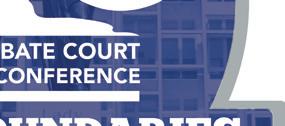


Our highly anticipated biennial Bench/Bar Conference is back, offering a unique opportunity to strengthen connections and collaboration between the bench and the bar. This year’s theme focuses on mastering digital tools in modern legal practice while avoiding common pitfalls. Gain valuable insights from engaging sessions and dynamic roundtable discussions on key topics, including the challenges and opportunities of AI, hybrid practice, and more. Don’t miss this chance to stay ahead in an evolving legal landscape! Learn more and secure your spot at ocba.org/bench-bar.



Join several local and affinity bars and their guest judges as we compete to see which bar can raise the most for its charity of choice. Attendees will vote for their favorite bar association by donating cash “tips” to the association’s “tip jar.” All tips will go to the charities selected by each respective bar association. The bar association that receives the most tips will win the challenge and receive an additional donation to its charity! All net proceeds from the event will be split between all of the charities. Join us and help your favorite affinity bar association to victory! Register at ocba.org/abcc
Judges from the Oakland County District, Probate, and Circuit courts, as well as the Michigan Court of Appeals, Michigan Supreme Court, U.S. Bankruptcy Court, and U.S. District Court for the Eastern District of Michigan, have been invited to this highly anticipated annual event at The Community House in Birmingham. In addition to taking advantage of valuable networking opportunities, attendees are encouraged to explore the items featured in this year’s silent auction. All auction proceeds will support a local charity. To learn more or to register, visit ocba.org/events
Our bench/bar brown-bag luncheon series continues virtually via Zoom and will feature newly appointed judge Hon. Tricia Dare from the Sixth Judicial Circuit Court Family Division. As Judge Dare wraps up her first 100 days on the bench, she will share preferred protocols and best practices for practicing in her courtroom. Bring your questions and join us for an informal discussion on legal topics and practice issues. Space is limited, so register today at ocba.org/events







Expand Your Knowledge with These Great Seminars!

7 2025 Circuit-Probate Court Bench/Bar Conference (8 a.m. – 1 p.m.) Beyond Boundaries: Effective Lawyering in a Digital World

Our highly anticipated biennial Bench/Bar Conference is back, offering a unique opportunity to strengthen connections and collaboration between the bench and the bar. This year’s theme focuses on mastering digital tools in modern legal practice while avoiding common pitfalls. Gain valuable insights from engaging sessions and dynamic roundtable discussions on key topics, including the challenges and opportunities of AI, hybrid practice, and more. Don’t miss this chance to stay ahead in an evolving legal landscape! Learn more and secure your spot at ocba.org/bench-bar Criminal breakout sessions are worth a total of 2.5 training credits for criminal and juvenile appointed counsel
20 Social Media Can Help Win Your Case (Noon – 1 p.m.)
A professional development seminar
Presenter: Magna Legal Services










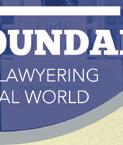

Join us for an in-person seminar designed to introduce you to using social media effectively in your cases. Get answers to the questions you’ve always wanted to ask! We’ll cover key rules and best practices for leveraging social media during trials. Don’t miss this opportunity to enhance your skills and knowledge! Lunch will be provided.
15 MIDC Updates 2025 (Noon – 1 p.m.)
A seminar for criminal defense appointed counsel
Presenter: Peter L. Menna, Esq., Chief Attorney, Oakland County Indigent Defense Services Office
This Zoom seminar will provide an overview of the Michigan Indigent Defense Commission. Hear how Oakland County is implementing all current MIDC standards, including 6 and 7, in the circuit and 52nd
District courts!
Worth 1 hour of criminal and juvenile training credit for appointed counsel

















By Alison Brandt
Medical malpractice litigation is a complex field that demands a thorough understanding of legal principles and medical practices. Having dependable resources can be invaluable as attorneys continually work to enhance their law practice. Although there are many approaches to achieving this, few can match the benefits of having one’s own legal nurse consultant (LNC) on hand to support one’s legal team.
LNCs have become essential professionals who provide critical medical expertise to attorneys across diverse legal domains, including:
• Personal injury cases;
• Auto no-fault litigation;
• Toxic tort claims;
• Medical malpractice suits;
• Product liability disputes; and
• Wrongful death proceedings.
By bridging medical knowledge and legal strategy, LNCs offer attorneys specialized insights that enhance case analysis, medical record interpretation, and expert witness preparation.
is article examines the benefits of utilizing an LNC in a medical malpractice case through the lens of a tragic incident involving Mr. Hugh Mann, a 64-year-old mechanic who died from septic shock following hernia repair surgery.
e case of Mr. Mann highlights several critical issues common in medical malpractice lawsuits, including communication barriers, failure to follow established protocols, and delayed diagnosis and treatment. Analyzing this case illustrates how a legal nurse consultant’s specialized knowledge and skills can greatly improve an attorney’s capacity to build a strong case and advocate effectively for their client.
Mr. Mann presented to the emergency department with severe abdominal pain and distention four days after undergoing bilateral inguinal (groin) hernia repair. Even though he exhibited clear signs of distress and had multiple risk factors for postoperative complications, there were several instances where the standard of care was breached. Some of these include:
• Failure to conduct a proper sepsis screening upon admission.
• Delayed diagnosis.
• Delayed administration of antibiotics and intravenous fluids.
• Failure to properly monitor.
• Failure to escalate care to the ICU when severe sepsis was identified.
• Failure to notify the provider of deteriorating patient condition.
An LNC’s expertise is crucial in identifying these potential breaches of the standard of care and explaining their significance to the attorney. By meticulously reviewing the medical records, an LNC can pinpoint critical timeline discrepancies, interpret complex medical terminology and procedures, and highlight deviations from established protocols. Additionally, LNCs can spot inconsistencies, such as timeline discrepan-
cies or conflicting statements in the provider’s notes, that could raise questions about the quality of care provided.
All the above, as well as identifying missing records, allows LNCs to piece together a patient’s medical and treatment history. Even the smallest detail, when discovered, can be vital to a case’s success. LNCs also pay close attention to discrepancies and missing documentation that could indicate errors or negligence. In this case, an important antibiotic was canceled right after it was ordered without a replacement being ordered. is was recorded in the pharmacy records and missed in the notes.
Ideally, after the review, the attorney will receive an honest and objective analysis in plain English, with their LNC clearly explaining all medical jargon, complete with applicable standards and evidence-based research.
Moreover, an LNC can provide valuable context regarding the progression of the patient’s condition and how timely interventions could have potentially altered the outcome. is medical insight is essential for attorneys to understand the full scope of the case and effectively argue causation and damages.
With careful scrutiny of provider notes, procedures, tests, and labs, LNCs can connect the dots between the injury and the causative elements. is is important when proving that a health care provider’s actions directly caused the injury is especially challenging.
Legal nurse consultants help attorneys interpret complex medical information, leading to fairer outcomes for victims of medical negligence.
In the following sections, we will use Mr. Mann’s case study as an example to explore how an LNC can objectively contribute to a plaintiff ’s medical malpractice case.
In first pursuing a case, LNCs can assist in determining whether it will be valuable or meritorious.


When performing a merit screening, we as LNCs can detect the specific strengths and weaknesses in the case using the four case elements. is helps determine the weight of the key medical issues as they apply to the law and how they affect the case’s merit. Utilizing our medical savvy, we determine potential breaches in standards of care and evaluate instances of negligence or malpractice. Our ability to objectively examine a case from both sides, plaintiff and defense, is highly beneficial!
rough meticulous analysis of medical records, LNCs can uncover crucial details that may otherwise be overlooked. In Mr. Mann’s case, an LNC would have quickly identified several egregious errors, omissions, delays, and failures. ese included the lack of proper sepsis screening upon admission despite clear risk factors and significant delays in proper and timely intervention, among others. e case was clearly meritorious and well worth pursuing.
One of the most valuable contributions an LNC can make is the construction of a detailed chronology or timeline highlighting the relevant case details. e chronology should be a wellorganized, refined overview that includes dates/ times, page locations, providers, descriptions, and important notations. Here, the attorney will find a general description of the most important points in the medical record. e medical case road map, if you will.
We also use this vehicle to demonstrate deviations from established practices and guidelines, identifying potential or likely negligence. For Mr. Mann, this timeline would have emphasized the nearly four-hour delay between his arrival at the ED and the first sepsis screening and the twohour delay in drawing blood cultures after they were ordered. Such delays can be critical in cases of severe sepsis, where rapid intervention is essential. A timeline table can also effectively highlight the critical periods when vital signs were not recorded during the patient’s deterioration.

LNCs also excel at interpreting laboratory results and explaining their significance to the facts of the case. In Mr. Mann’s case, they would have emphasized the low white blood cell count, indicating severe sepsis; the elevated blood urea nitrogen and creatinine levels suggesting kidney injury; and the critically high lactate level of 6.7, which was not addressed promptly. ese represent several red flags that, when viewed in context, paint a clear picture of a patient in severe distress.
Upon further case development, LNCs’ knowledge of nursing protocols and clinical expertise
allow us to play a vital role in the discovery process. e American Nurses Association Standards of Practice emphasize evidence-based care and adherence to professional guidelines. e ANA’s Nursing: Scope and Standards of Practice outlines 18 standards registered nurses must follow, providing a framework for competent patient care. ese standards, along with current research, regulations, and hospital policies, form the gold standard for nursing practice, allowing for the identification of adherence to or deviations from the required nursing standard of care.
Perhaps most importantly, by analyzing the progression of Mr. Mann’s condition, an LNC could help establish the link between the alleged negligence and the patient’s outcome. We can explain how earlier interventions might have altered the course of events, potentially preventing the patient’s tragedy. By analyzing the factors contributing to causation, we can determine what happened and where the failures occurred. An attorney can rely on their legal nurse consultant to locate any follow-up information on specific questions they may have. We present a concise summary analysis of the case facts, offering our professional insights.
Key failures identified in this case include:
• Delayed implementation of the sepsis protocol.
• Inappropriate admission to a telemetry unit instead of the ICU, despite clear signs of severe sepsis.
• Insufficient vital sign monitoring for a critically ill patient.
ese errors highlight significant deviations from the standard of care for sepsis management and critical patient monitoring.
Another area where we, as LNCs, can assist with written discovery is with interrogatories. We review the complete medical record, including all documented patient interactions and billing data. Drilling down on the background information allows us to identify key issues and develop relevant questions for discovery, ensuring a well-prepared legal strategy.
When collaborating on drafting legal documents like interrogatories to the facility, in this case, about their policies, procedures, and staffing, we ensure that the appropriate medical terminology and relevant medical facts support the legal arguments.
We can also suggest documents to procure at request for production to show acts or omissions. Pulling language directly from the medical record, we can help “box in” the opposing counsel during the attorney chess match of the request for admissions process.
Depositions are another way we can assist with the discovery phase. We organize relevant records to ask questions of the deponent, see if


they are mentioned anywhere else, tell the attorney where they fit in the overall puzzle, and assist in outlining and summarizing the deponent’s testimony.
We can help develop case themes based on our findings in the records. e legal nurse consultant can also assist in creating trial exhibits and demonstrative evidence to communicate key points effectively.
We review relevant medical literature, studies, and clinical guidelines to support our findings. is strengthens the legal argument and helps prepare for potential opposing arguments and depositions. ese insights are pivotal for building a strong case for medical negligence.
In litigation preparation, LNCs can assist in formulating deposition questions for expert witnesses and help attorneys understand complex medical terminology and related science. We can identify key areas where expert testimony would be most beneficial, such as the impact of delayed antibiotic administration in sepsis cases and the importance of prompt surgical intervention in cases of suspected bowel perforation.
Once the potential expert witnesses are identified, we can locate and coordinate them for the attorney’s selection. Having a neat and concise report ready for expert witnesses, such as specialty physicians and surgeons, epidemiologists, or bioengineers, helps them quickly see key information they need to opine on. is decreases the time they need to be paid to review the entire medical record set.
But first, the condition of the medical records is pivotal for effective case management. When these records are well organized and clearly bookmarked using terms understandable to medical professionals, the expert witnesses can easily navigate them. Delegating the task of organizing these records to the LNC offers significant benefits for everyone involved.

Allowing the LNC to handle this responsibility can help experts work more efficiently, reducing attorneys’ costs. When medical professionals don’t have to waste valuable time deciphering disorganized records, they can focus on their review and find things more quickly. is approach also frees up paralegal staff to concentrate on the more critical legal aspects of case development.
Investing time up front with an LNC streamlines the process and helps identify any missing or incomplete documentation early on. As a result, everyone saves time as the case progresses, leading to a smoother and more effective workflow.
Many of us can sit with and provide real-time support to attorneys during the trial, mediation, or deposition, helping them understand medical testimony and suggesting follow-up questions.
OTHER BENEFITS OF THE LNC ROLE
If this case had not resulted in death but instead left Mr. Mann with long-term disabilities affecting his ability to work, an LNC could calculate his future medical expenses using a medical cost projection report.
Some LNCs specialize in life care planning to help achieve a stronger outcome. ese life care plans evaluate the severity of injuries, the need for ongoing medical care, and the potential for future complications to estimate the full scope of the damages and injury claim value. As part of the legal team, we can ensure that the settlement demand includes detailed medical cost calculations and future care needs and can include a pain and suffering report for full impact.
As nurses, LNCs can work closely with attorneys’ clients and witnesses when preparing for depositions and court appearances. We can help them understand complex medical terms and concepts and offer emotional support beyond legal representation as we provide guidance during the legal process. We can explain medical procedures or expected deposition questions in an
easier-to-understand manner, helping to alleviate anxiety.
Moreover, having a nurse on the legal team adds a vital human touch for clients and their families. With medical expertise, a nurse can provide support and compassionately explain complex medical information, helping them understand the circumstances of a life-changing condition or their loved one’s death. Especially in death cases such as this example, having this clarity often provides a sense of closure and validation for grieving family members. Having had countless experiences supporting and consoling patients and their families, we can empathetically listen to survivors’ concerns and help them work through their grief during the legal process. is holistic approach strengthens the case and shows survivors in a unique way that the legal firm genuinely cares about their well-being — that it is committed to honoring their loved one’s memory through thorough, compassionate representation. People often find comfort in having a nurse listen to their stories and hear them with understanding. is will reflect extra TLC for the client and/or their family members.
Mr. Mann’s case decisively demonstrates the gravity of timely and appropriate medical intervention in postoperative patients presenting with signs of sepsis. e involvement of an LNC in such cases can significantly enhance an attorney’s ability to navigate the complex interplay of medical and legal issues.
LNCs bring a unique perspective that bridges the gap between the medical and legal professions. Our expertise allows for a more comprehensive analysis of the case, better identification of key issues, and clearer communication of complex medical concepts to attorneys and juries. In medical malpractice litigation, where the stakes are high and the issues complex, the role of the legal nurse consultant cannot be overstated.
e need for LNCs in medical malpractice cases will only grow as medicine advances and becomes more specialized. Attorneys who leverage the unique skills of legal nurse consultants enhance their ability to represent clients effectively, ensuring justice is served and the medical profession is held to the highest standards of care.
e devastating outcome for Mr. Mann is a stark reminder of the consequences when established protocols are not followed and communication breaks down. It underscores the vital role that LNCs play in uncovering these issues and helping prevent similar incidents by pursuing justice in the legal system.
Utilizing an LNC’s expertise can highlight the various medical complexities, providing critical medical insights to process the information and make it easier to understand. is
helps strengthen case strategies and supports fair outcomes for injury victims.
With the increasing usage of electronic medical records (EMRs) and audit trails in health care today, LNCs can be invaluable when examining these documents with the medical records. We can interpret and use these digital footprints to help us uncover any altered or missing records and verify the authenticity of the documentation. We translate complex audit trail metadata into plain English, uncovering critical evidence that may not be immediately apparent. By analyzing these trails, we can confirm whether the care was actually provided as recorded and offer insights that significantly enhance the case value.
In Mr. Mann’s case example, communication between the surgeon and the kidney specialist was not documented in the record but was suspicious given other notes. Critical information about the plan was revealed in the audit trail but not included in the deposition or found in the medical record. Who knew what information and when? Finding this information in the audit trail was very helpful in confirming an important hinge point in assessing liability.
LNCs are also crucial in identifying red flags in medical records, such as late edits or reluctance to provide audit trails. By analyzing these documents, we offer valuable insights that enhance understanding of plaintiff claims or provide defendants support, improve deposition preparation, and create clear timelines of events in EMRs.
LNCs’ expertise in various EMR systems allows us to guide attorneys in drafting effective e-discovery requests for audit trails. Leveraging our clinical experience and knowledge of health care regulations and standards, we help attorneys navigate the intricacies and requirements of the audit trail.
As artificial intelligence plays an increasing role in medical diagnosis and treatment planning, LNCs have the skill to navigate around it and read between the lines using our knowledge base.
Why do alternatives to using an LNC pale in
comparison?
Well, if an attorney is going it alone or has their nonmedical staff reviewing the medical records, chances are that something vital will get overlooked. is could make a big difference in determining negligence liability or a client’s defense and, ultimately, their client’s settlement results.
In navigating the many forms of medical records via electronic programs, LNCs have a trained eye from working so many years with the EMRs. And if an attorney is lucky enough to have a more seasoned nurse, their handwriting deciphering skill for those pesky handwritten paper records will surely be an added benefit! Using outsourced, foreign medical case review services tends to fall short. For one thing, these reviewer staff are not likely privy to Western medicine, including our standards of care in the U.S. Foreign workers may not understand America’s complex health care system, leading to misinterpreting medical records. Outsourcing medical records to foreign companies increases the risk of data breaches and unauthorized access to sensitive patient information. Overseas workers may lack familiarity with U.S. health care regulations, state laws, and specific requirements for cases, leading to errors in translation.
Some have noted relying on artificial intelligence (AI). While AI has provided numerous benefits to idea generation in many areas of law and medicine, it still falls short when it comes to replacing the skills of an LNC. According to the American Bar Association, lawyers should never rely on or submit AI-generated output “without an appropriate degree of independent verification or review of its output.”
In fact, in Formal Opinion 512, issued on July 29, 2024, the ABA warned that lawyers using generative AI must be cognizant of their ethical duties, especially regarding competent representation and client data protection. e opinion stresses the need for attorneys to understand AI tools’ capabilities and the potential risks involved.








S ER VING H EALTHCA RE PR OV ID ERS FOR OVE R 30 Y EARS
Wachler & Associates represents healthcare providers, suppliers, and other entities and individuals in Michigan and nationwide in all areas of health law including, but not limited to:
•Healthcare Corporate and Transactional Matters, including Contracts, Corporate For mation, Mergers, Sales/Acquisitions, and Joint Ventures
•Healthcare Corporate and Transactional Matters, including Contracts, Corporate For mation, Mergers, Sales/Acquisitions, and Joint Ventures
•Medicare, Medicaid, and Other Third-Party Payor Audits and Claim Denials
•Medicare, Medicaid, and Other Third-Party Payor Audits and Claim Denials
•Licensure, Staff Privilege, and Credentialing Matters
•Provider Contracts
•Licensure, Staff Privilege, and Credentialing Matters
Furthermore, from our years of direct patient care experience, as nurses, we understand the nuances of health care, from hands-on practice to critical thinking skills; our human insight is indispensable when interpreting medical records and identifying deviations from the standard of care. AI lacks the lived experience to capture this accurately.
Human intuition, trained through years of hands-on nursing experience, allows LNCs to spot red flags and potential pitfalls that automated systems may miss. Medical cases often involve subjective elements like pain levels, treatment adherence, and real-time clinical decision-making. AI’s data-driven analysis can’t fully replicate the depth of understanding LNCs use to interpret these cases. While AI can enhance efficiency, the nuanced, context-rich expertise of a legal nurse consultant remains irreplaceable.
LNCs are key in bridging the communication gap between medical and legal professionals. As mentioned, this personalized approach builds trust and enhances client satisfaction, which AI cannot reproduce. Similarly, it can’t replicate nurses’ compassion and ethical judgment in their interpretations or appreciate the human impact like nurses can.
Keeping communication open and fluid is optimum throughout the entire process; generally, as LNCs, we make ourselves available on standby to address our clients’ questions and concerns as they go through the life of the case. For their medical malpractice cases, attorneys will surely find that collaboration with a legal nurse consultant will yield favorable results.
•Billing and Reimbursement Issues
•Provider Contracts
•Billing and Reimbursement Issues
•Stark Law, Anti-Kickback Statute (AKS), and Fraud & Abuse Law Compliance
•Stark Law, Anti-Kickback Statute (AKS), and Fraud & Abuse Law Compliance
According to information from the expert witness organization SEAK, using a legal nurse consultant is the most cost-effective measure in developing a medical case. As nurses, we have years of experience in reviewing medical records. We provide a thorough understanding of medical issues at a fraction of the cost of having experts review the entire case.
•Physician and Physician Group Issues
• Regulatory Compliance
•Physician and Physician Group Issues
We bring insights and expertise to the table that can significantly impact a case’s outcome. Most LNCs have research capabilities, peers with experience in similar issues, and an expert pool of colleagues.
•Corporate Practice of Medicine Issues
• Regulatory Compliance
•Provider Participation/Ter mination Matters
•Corporate Practice of Medicine Issues
•Provider Participation/Ter mination Matters
• Healthcare Litigation
• Healthcare Investigations
For plaintiffs’ attorneys, LNCs can help build strong, medically sound cases that clearly demonstrate identified breaches in the standard of care and their consequences. For defense attorneys, LNCs can provide crucial support in validating health care providers’ actions where possible and identifying any potential alternative explanations for adverse outcomes. Once a case has been objectively determined to have merit, these services become particularly valuable in shaping the legal strategy.
• Healthcare Litigation
•Civil and Criminal Healthcare Fraud
• Healthcare Investigations
•Civil and Criminal Healthcare Fraud
•Medicare and Medicaid Suspensions, Revocations, and Exclusions
•Medicare and Medicaid Suspensions, Revocations, and Exclusions
•HIPAA, HITECH, 42 CFR Part 2, and Other Privacy Law Compliance
•HIPAA, HITECH, 42 CFR Part 2, and Other Privacy Law Compliance
S ER VING H EALTHCA RE PR OV ID ERS FOR OVE R 30 Y EARS
S ER VING H EALTHCA RE PR OV ID ERS FOR OVE R 30 Y EARS
Whether seasoned or new to this area of law, the malpractice attorney will find many benefits to partnering with a skilled legal nurse consultant. eir ability to serve their clients effectively will be greatly enhanced as they navigate complex medical issues and the health care system. As the legal and medical fields increasingly intersect, the expertise of the LNC will remain an invaluable resource for achieving fair and informed legal outcomes.


Alison Brandt, BSN, RN, of AccuRite Nurse Consulting, LLC, is a seasoned nurse with over 30 years of diverse experience including medical-surgical, cardiovascular, and corrections. She specializes as a legal nurse consultant in medical malpractice and personal injury cases. Brandt is an a liate member of the Oakland County Bar Association, including the Paralegal and Medical/Legal committees. She exhibited at the Michigan Association for Justice’s No-Fault Institute conference in 2024. She is pursuing her forensic nursing certi cation and has membership in multiple nursing organizations.

HEALTH CARE PROVIDER REIMBURSEMENT:
By Kaitlyn DelBene
Reimbursement matters, as well as related payor issues such as provider credentialing and plan participation, are essential to the success of a health care practice. Many attorneys will encounter health care provider clients even if their practice is not specifically focused on health care law. This article provides an overview of the current audit landscape, with a focus on legal counsel’s role in assisting with these matters, plus attendant risks in the Medicare context.
It is important for any attorney advising health care clients to be able to identify the applicable procedures and time frames for responding to audits and contesting initial audit determinations so as to promptly advise clients and preserve appeal rights. Given the multitude of different contractors carrying out these audits, as well as the at times labyrinthine procedural requirements, attorneys play an important role in assisting providers through the process. Hospital systems and other large providers have revenue cycle teams to address reimbursement and audit issues in-house, at least at the early stages. By contrast, smaller practices and solo practitioners may lack in-house billing and reimbursement expertise and can be devastated by an audit if not promptly addressed.
Audits of a health care provider’s claims may arise from participation with Medicare or Medicaid, either traditional or managed care plans, as well as commercial plans. Private payors typically conduct their own audits, while the
Centers for Medicare and Medicaid Services (CMS) direct audits of Medicare and Medicaid claims via an array of contractors tasked with particular focuses: Key contractor types in this space include Medicare Administrative Contractors (MACs), Supplemental Medical Review Contractors (SMRCs), Recovery Audit Contractors (RACs), and Unified Program Integrity Contractors (UPICs). Audit notifications, typically initiated by a request for records, may appear similar to routine billing-related communications from the payor or contractor. Health care providers should be advised to closely monitor payor correspondence and seek legal advice early to best respond to an audit.
In the private payor context, coverage policies and audit and appeals processes are governed by the contractual agreement between the commercial plan and a participating health care provider. Additionally, state laws often impose limitations on private payors such as requirements for timely payment of clean claims, time limits on the claim lookback period, and provider rights to specific denial rationales with audit determinations.
In the Medicare or Medicaid context, the audit process and applicable areas for the review will vary somewhat with the type of contractor conducting an audit, although the appeal process is the same. Often, audit determinations are based on medical review and findings that certain items or services were “not reasonable and necessary” pursuant to the Social Security Act Title XVIII, § 1862(a)(1)(A). For Medicaid claims, specific coverage rules may be set at the state level through state statutes, regulations, and billing handbooks. For Medicare claims, specific guidance may apply in the form of Medicare manual provisions, transmittals, learning network articles, coverage determinations, and coding guidance. At times, Medicare contractors may seek to impose new coverage requirements on claims that were made before such requirements went into effect. Legal counsel must investigate all possible sources of authority and be sure to rely upon versions in effect during the audited dates of service.
Legal counsel can assist by identifying relevant authorities as well as advising on and advocating for the appropriate weight to place on various regulatory and subregulatory sources. For example, while national coverage

determinations (NCDs) are published by CMS and apply nationally, local coverage determinations (LCDs) are issued by individual MACs and apply only within the applicable MAC’s jurisdiction. While LCDs are generally binding on the Medicare contractor performing an audit, administrative law judges performing the third level of review in a Medicare audit appeal are not bound to follow them, and there is a line of legal argument that enforcement actions cannot be based on LCDs or other subregulatory guidance alone.
Legal counsel can be helpful in identifying audit risk areas and compliance enhancement opportunities for health care clients. Of course, specific audit findings may serve as an opportunity to implement prospective compliance improvements. Additionally, advice to health care clients may be guided by monitoring the various publicly available work plans and audit contractor assignments that may apply to a client’s area of practice. One key source is the Active Work Plan Items list updated monthly by the U.S. Department of Health and Human Services Office of Inspector General. is list includes planned evaluations, inspections, and audits related to specific topics that the Office of Inspector General has identified for heightened scrutiny. Other sources include SMRC project lists, RAC approved topic lists, and MAC lists of Targeted Probe and Educate topics.
Attorneys advising health care clients should be attentive to potential risk areas arising from the audit context and advise clients about steps to mitigate these risks. One major risk area includes Medicare payment suspensions or enrollment revocations, actions that may be taken by CMS for various reasons, including based on alleged overpayments identified through one or more audits.
Even small Medicare audit findings can put a provider’s Medicare billing privileges at risk, especially when providers choose not to appeal audit determinations. For many health care clients, the decision to appeal audit findings includes an assessment of the cost involved to engage in the appeal process compared with the amount of the alleged overpayment. Even where the provider may have a strong case that the claims at issue were billed in compliance with Medicare requirements, the provider may consider forgoing appeal rights when the dollar amounts at issue are relatively low. Medicare

claim denials that go uncontested can quickly form the basis for suspension or revocation actions; thus, providers are well advised to pursue appeals when compliant claims are denied, no matter how small the audit.
While CMS has generally stated that its authority to revoke the Medicare billing privileges of enrolled providers is intended to protect the Medicare program and its beneficiaries from overt abuse, ongoing expansions to the grounds for revocation at 42 CFR § 424.535 have swept many well-intentioned providers into CMS’s crosshairs. Increasingly, relatively very small audit findings — e.g., amounting to $5,000 or less in alleged overpayments and/or including only a very small sample of the provider’s total claims to Medicare — if left unappealed by the provider, are leading CMS contractors to pursue disproportionately severe revocation actions based on alleged abuse of billing privileges.
Providers faced with audit findings should be cognizant of CMS’s revocation authority and should make it a standard practice to engage seriously in the appeals process when faced with audit findings by CMS or its contractors.
Likewise, the number of Medicare payment suspensions issued by CMS has grown in recent years. Although it may appear to be a temporary and less severe sanction than a revocation of billing privileges, a suspension of Medicare payments can be just as devastating to a health care provider and can in many cases put the provider out of business. Significant procedural and due process concerns regarding the frequent use of revocations and payment suspensions have not yet led to any reform of this practice by CMS.
A revocation typically leads to ramifica-
tions for the revoked provider even beyond the Medicare context. In many states, statutory requirements exist for state Medicaid programs to terminate a provider from participation in the state plan when Medicare has revoked the provider’s billing privileges. Commercial payors usually follow suit pursuant to contract language in provider agreements. ese actions by the payors, in turn, may lead to state licensing actions and loss of hospital staff privileges for the revoked provider.
As the health care field continues to grow and consolidate, challenges for smaller practices only increase, and the audit landscape is no exception. Legal counsel can be essential to addressing audits and attendant risks, as well as to assisting with monitoring risk areas and opportunities for compliance enhancements.


Kaitlyn DelBene, Esq., is an associate at Wachler & Associates, PC, in Royal Oak. DelBene practices in all areas of health care law, representing health care providers and suppliers in the defense of Medicare, Medicaid, and third-party payor audits, as well as a broad range of health professional and facility licensing and regulatory compliance matters.

By Silvia Mansoor
Although ChatGPT and Google’s Gemini have only recently begun to make their ways into dinnertime and cocktail party conversation, artificial intelligence (AI) is not a new concept. The building blocks of modern-day AI have been developing for decades and arguably go as far back as the McCulloch-Pitts neural networks in the 1940s and scientist Alan Turing’s discussion of computers’ thinking abilities in the 1950s.1 Through the subsequent decades, AI made appearances in the mainstream from time to time — e.g., IBM’s Deep Blue defeating chess champion Garry Kasparov or IBM’s Watson defeating all-time Jeopardy! champion Ken Jennings — with the latest and arguably most prolific appearance occurring right now.
In recent years, AI has moved past the confines of scholarly and scientific discussion and has integrated itself into everything from customer service chatbots to our smartphones’ functionality. More than personal use, however, AI has also become valuable in various professional industries, including those of health care and medicine.
This article seeks to provide a discussion point of how the law might consider AI’s involvement in the practice of medicine. This article is not intended to be a comprehensive overview of the history of AI or a complete blueprint of the intersection of AI and the law. It is only meant to provide a high-level overview and allow the reader to consider the future of AI in the law and more particularly in the law pertaining to medical malpractice.
In the 1970s, we find some of the building blocks of AI in health care through the Research Resource on Computers in Biomedicine at Rutgers University and the Stanford University Medical Experimental-Artificial Intelligence in Medicine collaborations.2 That same decade, one of the first medical AI prototypes came about: a CASNET (causal-associational network) model intended to apply information about glaucoma to individual patients with the purpose of providing advice on diagnoses and management.3 In the next decade, the University of Massachusetts released DXplain, which started out as a decision support system that used patient symptoms in order to generate a differential diagnosis.4 Similar to artificial intelligence’s use in the mainstream, its early applications in medicine primarily occurred on a scholarly level.
Arguably, it was not until the 2010s when things sped up. During this point, processes such as health care chatbots and patient intake systems came about.5 While it may be one thing to allow a chatbot to assist a patient in providing a family medicine doctor some preliminary information about their visit or to assist patients in navigating their medication schedules, it is an entirely different endeavor to allow AI to assist in diagnostic and medical decision-making. At least one area in which AI is currently doing that is radiology.
Founded in 2011, Arterys (recently acquired by Tempus AI)6 demonstrated its technology at the 2018 Radiological Society of North America Annual Meeting in Chicago, during which it provided demonstrations of technology that automatically analyzed cardiac MRIs, liver lesions, lung nodules, and more in radiology practice.7 As with any technology, there will be front-runners and those that go the way of the dot matrix print-
er. The takeaway, though, is that AI has made its appearance in clinical medicine. In fact, even in the recent Top Doctors issue of Hour Detroit magazine, we learn directly from local physicians that AI is being used to assist in decisionmaking in orthopedics, oncology, cardiac surgery, colorectal surgery, and bariatric surgery. Although still “in its infancy,” as colorectal surgeon Dr. Robert K. Cleary puts it, AI is a “promising new tool in colorectal surgery.”8 In fact, it has gotten to a point where there may be information overload regarding AI in medicine — just search for “AI medical journal” online, and the reader will see dozens of results.
Enough about the building blocks and background — what does the law say? Using our own experience and observations in the legal world, we know AI is not foolproof. By now, most know about the case in the Southern District of New York in which a legal brief was submitted with AI hallucinations9 that cited fake cases. In his opinion regarding sanctions, Judge P. Kevin Castel acknowledged that “[t]echnological advances are commonplace and there is nothing inherently improper about using a reliable artificial intelligence tool for assistance.”10 However, attorneys still have to ensure the accuracy of their filings. In making that statement, the court cited FRCP 11.11 Analogously, medical providers have an obligation to stay apprised of new techniques and developments. At least in the near future, AI is not meant to replace physicians; rather, it should provide augmented intelligence and actionable insight.12 It should also help health care entities
provide more personalized and precise medicine. Similar to how Judge Castel considered AI to be a tool for assistance, the American Medical Association encourages the usage of “augmented intelligence” to focus on its assistive role as opposed to entirely replacing a human’s role.13
Since AI has only recently been making great strides in worldly applications and more recently made its way into the clinical medical realm, the discussion on the law is still in its infancy. Since at least 2019, the United States Food and Drug Administration has been publishing papers and guidelines regarding AI and machine learning in medical devices.14 On October 30, 2023, United States President Joe Biden issued an Executive Order on the Safe, Secure, and Trustworthy Development and Use of Artificial Intelligence15 that directed standards for AI safety, security, and responsible uses. In 2023, Georgia passed a law allowing prescription lenses to be provided, in part, based upon an “assessment mechanism,” which is defined to include AI.16 In 2024, Colorado passed the Colorado Artificial Intelligence Act with the intention of protecting consumers when interacting with AI.17
Michigan has yet to pass comprehensive legislation regarding AI but has at least defined it in the context of the Michigan Campaign Finance Act:
(1) “Artificial intelligence” means a machinebased system that can, for a given set of human-defined objectives, make predictions, recommendations, or decisions influencing

real or virtual environments, and that uses machine and human-based inputs to do all of the following:
a. Perceive real and virtual environments.
b. Abstract such perceptions into models through analysis in an automated manner.
c. Use model inference to formulate options for information or action.18
Focusing specifically on health care, California has passed a law — also called the Physicians Make Decisions Act — limiting the role of AI in health plan prior authorizations.19 California also recently passed a law requiring a “health facility, clinic, physician’s office, or office of a group practice” that uses AI for generating written or verbal patient communications pertaining to clinical information to provide a disclaimer to the patient that the communications were prepared by AI and to provide instructions on how to contact a human health care provider. Note, however, that the requirements do not apply if the communication is generated by AI and then “read and reviewed by a human licensed or certified health care provider.”20
In the past couple of years, the Illinois legislature has attempted to introduce legislation that would institute requirements that a hospital must meet before using a “diagnostic algorithm” to diagnose a patient.21 ese efforts have not yet been fruitful. Rhode Island’s legislature has also unsuccessfully attempted to introduce legislation that would require health insurance plans to cover the usage of AI in breast cancer diagnoses provided that the generated imaging and review

are then independently reviewed and approved by a qualified physician.22 Earlier this year, the Georgia legislature also considered legislation that would, among other things, prohibit physicians from solely relying upon artificial intelligence in making clinical decisions.23 is bill has also failed.
e aforementioned is not an exhaustive list. It illustrates, however, that the states are working to grapple with the definition of AI, its regulation, its interplay with other laws, and how we allow it to be used within our society. Legal scholars have also considered how liability will be applied when an error is made utilizing medical AI. Liability cannot be assigned to a machine, but it can be assigned to developers, hospitals, or individual providers. is also raises the question of what happens if the AI operates outside of the principal’s control. Until we must determine the future of all the Skynet scenarios, let us focus on the here and now.
Narrowing in on medical malpractice in Michigan, there is no current explicit statute or case law that the author could find discussing the consideration of AI in medical malpractice. Medical malpractice is a type of professional malpractice. Generally, a defendant is — or holds themselves out to be — a licensed health care professional, a licensed health facility or agency, or an employee or agent of a licensed health facility or agency.24 Moreover, the defendant has to have engaged in or otherwise assisted in the medical care or treatment of a patient.25 For medical malpractice liability to attach, there must be a provider-patient relationship.26 In proving the claim, a plaintiff has to establish (1) the appropriate standard of care governing the defendant’s conduct at the time of the alleged negligence, (2) that the defendant breached said standard, (3) that the patient was injured, and (4) that the injuries were a proximate result of the defendant’s breach of the applicable standard of care.27
In Michigan, along with a complaint, a plaintiff must file an affidavit of merit by a qualified expert in the same specialty as the defendant. In turn, a defendant must file an affidavit of meritorious defense by a similarly qualified expert.28 In part, these affidavits must set forth the applicable standard of care — i.e., what the reasonably prudent physician would have done — and how the defendant either breached or adhered to the respective standard.
As has been discussed in this article, medicine is continuously innovating and integrating new technologies into practice.29 From the improvement of diagnostic imaging to robotassisted surgeries, the practice of medicine is far from stagnant. is is important because until
and unless there is more guidance by statute or otherwise, an expert can opine that an applicable standard of care requires, for example, a physician to independently review an AI-interpreted image. Alternatively, an expert could opine that it was within the standard of care to rely upon the AI-interpreted image. e current litigation tools that are set forth by court rules and statutes already provide us with a framework to address AI’s integration into medical practice and resulting allegations of malpractice. As author and attorney Michael D. Greenberg once put it, “By implication, the malpractice standard in 2008 is different from what it was in 1978, less because of any changes in the law than because of changes in medical knowledge and new technologies.”30
As technology advances, the law must keep up. Currently, while there are no clear-cut directives specifically pertaining to the intersection of medical malpractice and AI, we still have to consider it within the cases we litigate. Its consideration can allow us, our clients, and our experts to either champion or inhibit the usage of AI in the practice of medicine. I would urge you to:
• Talk to your clients. Did they encounter any AI in their health care? If so, what? Was there any AI used in decision-making that was medical or otherwise?
• Talk to your experts. Ask them about the technology and its integration into the relevant practice. Should the opposing expert’s opinions be challenged? Will your expert withstand a challenge?31
• Do your legal and medical research. Has the law provided more guidance regarding the usage of AI in medicine? How has the medical industry considered and adopted it?
• Learn the technology, too. Learning the underlying medicine necessarily involves learning the involved technology, which will increasingly include AI.
Imagine what the pioneers of medicine would think if they knew how far medical science has come. e author would like to think that they would be in awe and amazed. It is with similar awe and amazement that we should learn about AI’s usage in medicine and then consider the law’s application to it.


Silvia Alexandria Mansoor is an attorney at Foley, Baron, Metzger & Juip, PLLC, who represents medical providers and handles complex claims. Her favorite part of each case is learning the
underlying medicine. She is also currently the chair of the State Bar of Michigan Young Lawyers Section, a member of the OCBA board of directors, and a proud Michigan State University College of Law alum.
Footnotes:
1. See Tara H. Abraham, (Physio)logical Circuits: The Intellectual Origins of the McCulloch-Pitts Neural Networks, 38 J. Hist. Behav. Sci. 3-25 (2002), available at https:// onlinelibrary.wiley.com/doi/10.1002/jhbs.1094; Alan M. Turing, Computing Machinery and Intelligence, 59 Mind 433 (1950), available at https://academic.oup. com/mind/article/LIX/236/433/986238.
2. See Vivek Kaul, M.D. et al., History of Artificial Intelligence in Medicine, 92 Gastrointestinal Endoscopy 807, 809 (2020), available at https://www.giejournal.org/article/ S0016-5107(20)34466-7/fulltext.
3. Id.
4. Id.
5. Id.
6. Tempus, https://www.tempus.com (last accessed Dec. 11, 2024).
7. Kaul et al., supra note 2 at 809-10.
8. Top Docs, Hour Detroit, p. 60 (Oct 2024); see also Medtronic’s GI Genius as an example of such a tool (https://www.medtronic.com/en-us/healthcare-professionals/ products/digestive-gastrointestinal/gastrointestinal-artificial-intelligence/gi-geniusintelligent-endoscopy-module.html).
9. An AI hallucination is when the program generates inaccurate or misleading results.
10. Mata v. Avianca, Inc., 678 F. Supp. 3d 443, 448 (S.D.N.Y. 2023).
11. Michigan’s similar rule would be MCR 1.109(E).
12. See Kevin B. Johnson et al., Precision Medicine, AI, and the Future of Personalized Health Care, 14 Clin. Transl. Sci. 86 (2021).
13. Augmented Intelligence in Medicine, AMA-Assn.org (Apr. 4, 2024), https://www. ama-assn.org/practice-management/digital/augmented-intelligence-medicine.
14. Artificial Intelligence and Machine Learning in Software as a Medical Device, FDA. gov, available at https://www.fda.gov/medical-devices/software-medical-devicesamd/artificial-intelligence-and-machine-learning-software-medical-device (last accessed Dec. 18, 2024).
15. Executive Order on the Safe, Secure, and Trustworthy Development and Use of Artificial Intelligence, WH.gov (Oct. 30, 2023), https://www.whitehouse.gov/briefingroom/presidential-actions/2023/10/30/executive-order-on-the-safe-secure-andtrustworthy-development-and-use-of-artificial-intelligence.
16. O.C.G.A. § 31-12-12.
17. S.B. 24-205, 74th Gen. Assemb., Reg. Sess. (Colo. 2024) (codified in Colorado Revised Statutes at C.R.S. 6-11701 et seq.), available at https://leg.colorado.gov/bills/ sb24-205 (last accessed Dec. 18, 2024).
18. Mich. Comp. Laws § 169.202(1).
19. Cal. Health & Saf. Code § 1367.01; see also Governor Signs CMA-Sponsored “Physicians Make Decisions Act” to Preserve Human Oversight in the Use of AI, CMAdocs.org (Sept. 28, 2024), https://www.cmadocs.org/newsroom/news/view/ ArticleId/50708/Governor-signs-CMA-sponsored-quot-Physicians-Make-DecisionsAct-to-preserve-human-oversight-in-the-use-of-AI.
20. Cal. Health & Saf. Code § 1339.75.
21. H.B. 1002, 103d Gen. Assemb., Reg. Sess. (Ill. 2023), available at https://www.ilga. gov/legislation/BillStatus.asp?DocTypeID=HB&DocNum=1002&GAID= 17&SessionID=112&LegID=142909.
22. H.B. 8073, 2024 Reg. Sess. (R.I. 2024), available at https://www.billtrack50.com/ billdetail/1723689.
23. H.B. 887, Insurance; Use of Artificial Intelligence in Making Certain Decisions Regarding Coverage; Prohibit (2023-24 Reg. Sess.), available at https://www.legis. ga.gov/legislation/65973.
24. Mich. Comp. Laws § 600.5838a.
25. Id
26. See Dorris v. Detroit Osteopathic Hosp. Corp., 460 Mich. 26, 45, 594 N.W.2d 455 (1999).
27. Craig v. Oakwood Hosp., 471 Mich. 67, 86, 684 N.W.2d 296 (2004); Weymers v. Khera, 454 Mich. 639, 655, 563 N.W.2d 647 (1997) (internal citations omitted); Mich. Comp. Laws § 600.2912a.
28. Mich. Comp. Laws §§ 600.2912d-e, 2169.
29. See, e.g., Medical Devices and Technology Across the Years, Yale School of Medicine (2019), https://medicine.yale.edu/news/yale-medicine-magazine/article/ medical-devices-and-technology-across-the-years.
30. Michael D. Greenberg, Medical Malpractice and New Devices: Defining an Elusive Standard of Care, 19 Health Matrix: J. Law & Medicine 423, 424 (2009).
31. See, e.g., M.R.E. 702; Mich. Comp. Laws § 600.2955.

e mission of the Oakland County Bar Association is to serve the professional needs of our members, enhance the justice system, and ensure the delivery of quality legal services to the public. We fulfill our mission through our 30 committees, regular networking events, and numerous educational programs for both OCBA members and the public. We work hand in hand with the OCBA volunteer board directors and members, and we partner closely with the courts.
Below are recent examples of the OCBA at work in service to the bar and to the community.
e Municipal Law Committee demonstrated its generosity by donating 26 gifts through Waterford Youth Assistance to support a local family, consisting of a 5-year-old girl, a 3-year-old boy, and their mother. In addition, the committee gifted the family a $125 Meijer gift card to further brighten their holiday season.


Affectionately known as the Wills & Gills holiday party, this annual event is hosted by the Probate, Estate and Trust Committee to show appreciation for the Oakland County Probate Court staff and their dedicated service to attorneys throughout the year. Held on November 19, 2024, at Red Lobster, the gathering brought together over 35 court staff members and judges for an evening of delicious food, refreshing drinks, and meaningful networking.

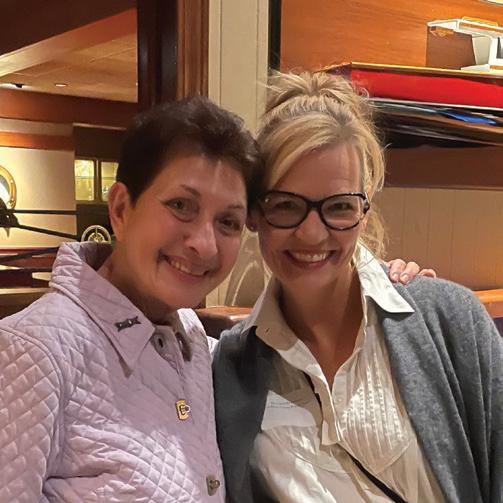











Over 25 attendees enjoyed the Family Court Committee’s annual holiday party on November 6, 2024, at Dick O’ Dow’s in Birmingham. Court staff and judges from the Oakland County Circuit Court Family Division were hosted by the committee as a way to thank them for their dedication and service throughout the year.

On December 10, 2024, 10 members of the Tax Law Committee gathered at Plunkett Cooney to celebrate the holiday season. The event offered a wonderful opportunity to reconnect in person while enjoying delicious food, refreshing drinks, and excellent company.





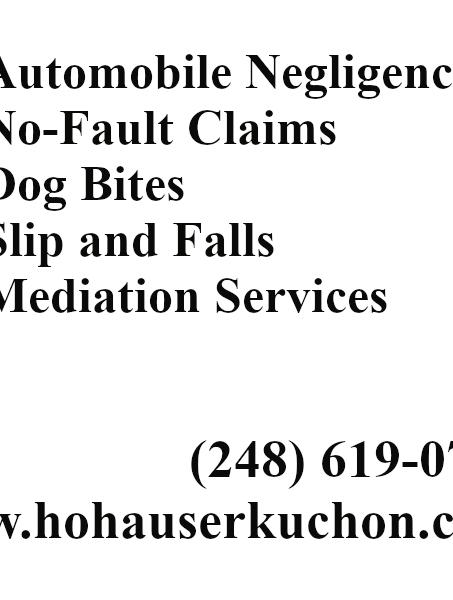

In previous columns, we featured the good work some Oakland County Bar Foundation grant recipients are doing, like CARE House of Oakland County or the Conviction Integrity Clinic. These boots-on-the-ground organizations do much to provide access to justice directly to those in desperate need of it, and we are proud to support them. However, another important aspect of the foundation’s mission — indeed, its original mission — is legal education. (See points 3 through 5 of the mission statement, accompanying this article.) The foundation supports several projects each year that inform members of the general public about their rights and how to comply with their legal obligations. It also supports projects that sharpen the knowledge and skills of Oakland County judges and lawyers, with the goal of improving the delivery of legal services and the administration of justice in our county.
These important goals of legal education are not a new lesson. Consider the words of Edward Everett, a governor of Massachusetts and a U.S. secretary of state, congressman, senator, and diplomat. He unfortunately is best known as the keynote speaker who delivered a two-hour oration at the 1863 dedication of the Gettysburg National Cemetery before Abraham Lincoln delivered his two-minute Gettysburg Address. However, 11 years before his largely forgotten dedication speech, Everett, the 16th president of Harvard University, wrote, “Education is a better safeguard of liberty than a standing army.”1
Other noted figures have made similar observations. George Washington Carver wrote in an April 12, 1896, letter to Booker T. Washington, “Education is the key that unlocks the golden door to freedom.”2 More recently, Nelson Mandela said, “Education is the most powerful weapon which you can use to change the world.”
Education and legal research have always been an important purpose of the foundation. It formally incorporated on August 8, 1976, as a public and community organization, under Section 509(a)(3) of the Internal Revenue Code,
By Jeffrey G. Raphelson
called the Oakland Law Library Foundation. It was dedicated to assisting the Adams Pratt Law Library (now the Adams-Pratt Oakland County

The Oakland County Bar Foundation’s mission is to ensure access to justice and an understanding of the law in our community. It is dedicated to:
Improving and facilitating the administration of justice in Oakland County and throughout the state of Michigan;
Ensuring to the fullest extent possible that legal services are made available to all members of the public;
Promoting legal research and the study of law as well as the diffusion of legal knowledge;
Promoting the continuing legal education of lawyers and judges; and
Educating the public as to their legal rights and obligations, and fostering and maintaining the honor and integrity of the legal profession.
If you know an organization that could use assistance to pursue these goals within Oakland County, please refer them to ocba. org/ocbfgrants, where they can find information about applying for a grant from the foundation.
Law Library)3 in providing resources to Oakland County lawyers, such as computer-assisted legal research and microfilm archives. In 1988, the foundation reorganized as the Oakland BarAdams Pratt Foundation, a 501(c)(3) corporation formed in cooperation with the Oakland County Bar Association. In addition to supporting the law library, the new organization offered educational programs to the Oakland County bar and public. Examples included the Oakland Reading Partners Program, Junior Law School, Due Process, and scholarships. On January 14, 2000, the foundation was renamed the Oakland County Bar Foundation, and its new articles, filed August 4, 2000, recited purposes very similar to the current mission statement.
Currently, the foundation supports several well-established educational programs. During the 2023-24 fiscal year, the foundation once again funded the Michigan Center for Civic Education’s mock trial program, which included a countywide regional event at the Oakland County Circuit Courthouse for high school students. The foundation also supported the post-COVID resumption of the OCBA’s mock trial program for elementary schools. This creative program, started in 2010, introduces young students to civics education and legal processes through an engaging trial theme (currently, an intellectual property dispute involving SpongeBob SquarePants). Last year, it reached eight elementary classrooms in four schools with 277 student participants.
The foundation also sponsors the OCBA Youth Law Conference, which teaches high school juniors and seniors about a variety of relevant legal issues, career options in law, and general legal processes. Last year’s 30th annual conference was sold out (six high schools were unable to participate). It began with a keynote address from Michigan Secretary of State Jocelyn Benson, who shared how lawyers and public servants can have an immediate positive impact on citizens’ lives, as well as about her own impressive career path. It ended with a chance
for the students to meet dogs from the Oakland County Sheriff ’s K-9 and comfort dog units.
Students are not the only ones who benefit from foundation-funded educational programs. On May 17, the foundation helped present the 2024 installment of the Society of Active Retirees’ Harry Cook Social Justice Series, a mock trial program that explored the threat of fascism to democracy and the legal system’s role in combating it. In the spring, the foundation sponsored two Senior Law Days, a no-cost program that informs older people or their adult children on legal issues that impact seniors. One was held at the Costick Center in Farmington Hills, and the other was at the Waterford Senior Center. Topics included wills and trusts, medical powers of attorney, guardianships and conservatorships, and the Michigan estate recovery plan.
For the legal community, the foundation sponsored the District Court Bench/Bar Conference, at which attorneys and district court judges interacted in a less formal setting to discuss topics such as landlord/tenant law updates, alternative dispute resolution, and best practices for representing clients in virtual environments. e foundation also sponsored the OCBA New
Lawyer Boot Camp for lawyers in practice less than five years and law students. During this full-day training program, judges, judicial staff, and expert attorneys taught participants how to navigate the court system and best represent their clients.
rough these programs, the foundation helps educate Oakland County residents on how to protect their rights, interact with the legal system, and navigate their other dealings with the government. It also improves the skill and knowledge with which Oakland County attorneys practice and judges preside. We appreciate your support of (and participation in) the foundation’s programs. (To that end, we hope you will attend, and perhaps sponsor, the 2025 Signature Event on Wednesday, May 7, 2025, at Orchard Lake Country Club. Tickets are available now.) It is a very rewarding way to promote access to justice in our county.

Je rey G. Raphelson is the president of the Oakland County Bar Foundation and a member and general counsel of Bodman PLC. He focuses his practice on commercial litigation, particularly matters related to the automotive and banking industries, as well as
general commercial cases involving contract, intellectual property, corporate governance and dissolution, and dealer and franchise termination disputes. He has served on numerous State Bar of Michigan committees and is a current board member and treasurer of the Historical Society for the U.S. District Court for the Eastern District of Michigan.
Footnotes:
1. The Common School Journal and Educational Reformer, edited by William B. Fowle, 1852.
2. Tuskegee Institute Archive, George Washington Carver Papers, reel 1, frame 0762. The quote was in Carver’s reply to a letter from Washington offering Carver a position as head of the Tuskegee Institute’s agriculture department.
3. “Adams” refers to Judge Clark Jayno Adams, a Michigan Supreme Court justice from 1952 to 1953 (filling a vacancy created by the death of Justice Walter H. North), then an Oakland County Circuit judge from 1956, when Gov. G. Mennen Williams appointed Adams to a new judicial seat, until 1973. “Pratt” refers to Judge Philip Pratt, who was an Oakland County Circuit Court judge from 1963 to 1970, when Richard Nixon appointed him to the United States District Court for the Eastern District of Michigan, where he served as chief judge from 1986 until his death in 1989.




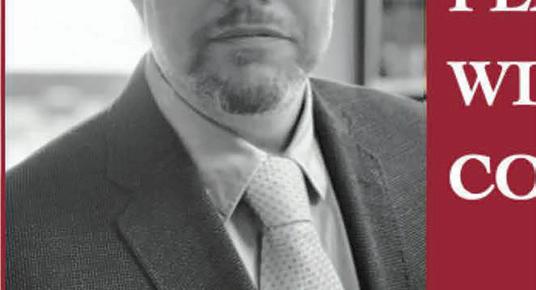

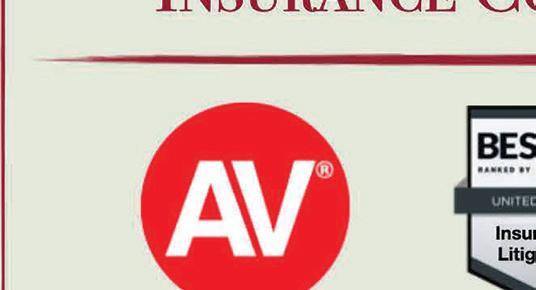


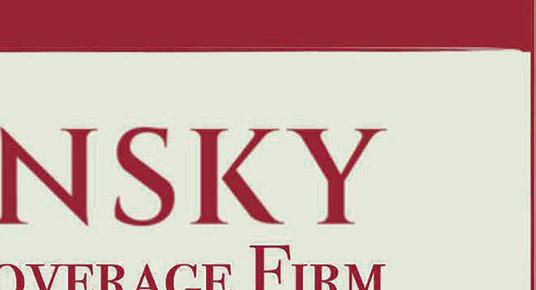


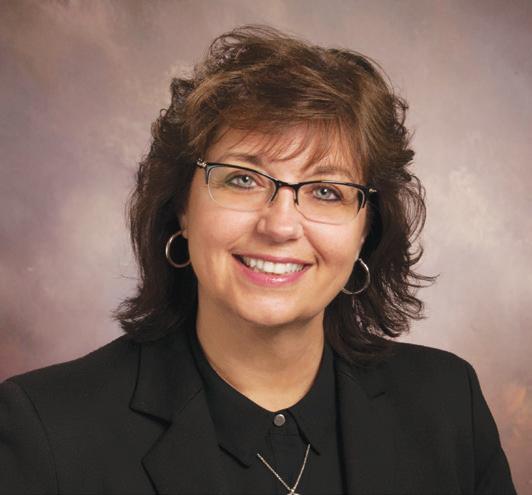
E-filing, short for “electronic filing,” is a statewide system, sponsored by the State Court Administrative Office, that provides the ability to electronically file documents without traveling to a courthouse and waiting in line. It also allows parties to electronically serve one another with documents and to electronically receive notifications and documents from the courts. Electronic filing is not restricted by court operating hours, and any document submitted at or before 11:59 p.m. on a business day is deemed filed on that day. Michigan uses a software system called MiFILE for the e-filing process. MiFILE supports functionality to e-serve parties, and users will receive notifications about their filings as they are processed.
e original date for implementation of MiFILE for the probate court was delayed in an effort to maximize the success of this transformational project. e new implementation phase for the court began in January of 2025, with a go-live date of June 5, 2025. All attorneys submitting filings with the court will be required to e-file as required by Michigan Court Rule 1.109(G)(3)(f). As such, starting on June 5, 2025, attorneys will be required to e-file court documents via MiFILE. You will need a MiFILE account to submit documents to the court.
To get started, visit the MiFILE website (mi le.courts.michigan.gov) and click “Sign Up” in the upper-right corner. Creating the account is free. Although signing up for MiFILE and having a MiFILE account are free, there are fees to file some forms with the court. e amount of the filing fee varies based on what you are filing. e filing fee is the same whether you are e-filing or paper filing. MiFILE currently only accepts credit cards as payment. If you are using a prepaid card, you will need to have the entire fee on one card. Save the prepaid card after you file, even if the balance is
By Barbara P. Andruccioli
zero. If your filing is rejected or fees are refunded for any other reason, the fee will go back on the card that you used.
When signing up for a new account, register with the same email address you provided to the State Bar of Michigan. You should visit your member profile on the State Bar of Michigan website if you cannot remember which email address you have on file. Our transition to MiFILE requires that the service recipient list for each case in MiFILE be populated from the party and attorney information maintained in our court’s case management system; in some instances, the attorney email addresses in the case management system will have originated from a file maintained by the State Bar.
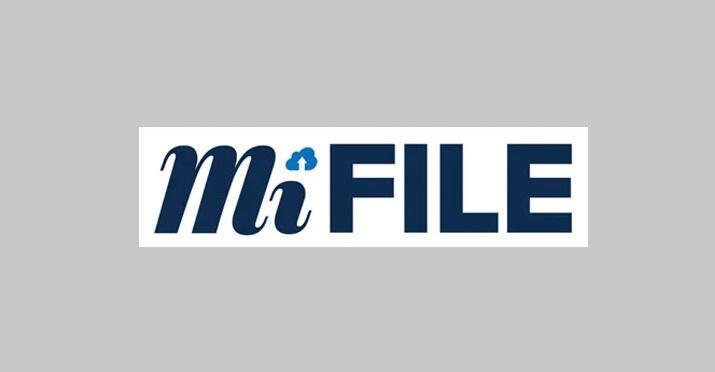
MiFILE allows users to build a network of firm attorneys and firm members. is functionality is called “Connections.” Connections allows support staff to submit documents on behalf of the attorney. Only attorneys may initiate connection requests with another user, but any user can receive connection requests from an attorney. Each member of your legal support staff should also create their own MiFILE account. Once a connection is established, connected users can file on one another’s behalf, share payment information, and access one another’s filing histories.
MiFILE provides for electronic service
of documents to MiFILE courts and other registered users. Any MiFILE user can request to be added as a service recipient in MiFILE if they have a legal interest in the case and file a document in support of that request. Such documents include attorney appearances, motions to intervene, third-party complaints, or a request for service as a person interested in the case through a court-ordered appointment (such as a receiver).
Legal support staff are not eligible service recipients in MiFILE because they do not have a legal interest in the case. erefore, you must use Connections to ensure that your support staff is copied on electronically served documents if you wish for them to receive notifications of electronically served and electronically noticed documents.
MiFILE automatically stamps certain SCAO-approved forms upon acceptance by the court. erefore, when using SCAO-approved forms, it is important to use the current version without modification. Slight changes to formatting from using printed, scanned, and/or customized forms can adversely impact MiFILE’s stamping functionality and may lead to your documents being rejected by the court.
As we are getting ready for implementation, we ask for your patience. We are confident that if we work together, MiFILE will ultimately lead to increased productivity, improved efficiency, and a reduction in the difficulties associated with handling paper documents. For further questions or concerns, please feel free to email the MiFILE help desk at mi lesupport@ courts.mi.gov.

Barbara P. Andruccioli is the Oakland County Probate Court register.
“Where is the ‘any’ key?”
—Homer Simpson, in response to the message “Press any key”
Anderson
Brennan
12/2/2024
Grant
12/9/2024
Matis
McMillen
12/9/2024
Poles
2023-203994-NF
Accurate Care v. Progressive Marathon Ins.
2022-281237-FC
People v. Stokes
2023-283296-FC
People v. Benton
2022-281600-FC
People v. Porras
2024-289273-FH
People v. Cooper
2023-285274-FC
People v. Taylor
Poles
12/3/2024
Rowe
12/9/2024
Valentine
12/12/2024
Valentine
Ronayne KrauseVisiting Judge
2021-276406-FH
People v. Jones
2022-196171-NH
Brenda Woodson v. William Beaumont Hospital
2022-279816-FH
People v. Legette
2023-286429-FH
People v. Matzkvech
2023-201651-NI
Ruby Clark v. Yonan Girgis
Jordan Dollar Nadine Hammoud
David Champine
Leonard Ballard
Brandon Barlog
Johnny Hawkins
Heather Brown
Richard Taylor
Mahira Musani Dory Baron
Jeffrey Hall
Brent Jaffe
Qamar Stamos Adam Clements
Kenneth Watkins
James Tamm, John Ramar
Nicole Garmo
Gregory Mortimore
Nicole Garmo
Daren Wiseley
William Dobreff Michael Edmunds
Cts. 1 & 2 CSC 1st Deg. (Weapon), Ct. 3 Unlawful Imprison., Ct. 4 LIB
Ct. 1 AWIM, Cts. 2 & 4 Weap. FF, Ct. 3 Felon. Poss. FA, Ct. 5 Weap. - Ammun. Felon.
Ct. 1 Murder 1st Deg., Ct. 2 Child Abuse 1st Deg.
Police Officer Aslt./Resist/ Obst. Causing Injury
Ct. 1 AWIM, Cts. 2, 4, 6 Weap. FF, Ct. 3 Armed Robbery, Ct. 5 Felon. Poss. FA
Poss. FA, Weap. FF 2nd Off., CCW, Reckless Use of FA
Medical Malpractice
Ct. 1 Identity Theft, Ct. 2 Fin. Trans. Device - Illegal Sale/Use
as Charged
Guilty of Lesser Police Officer Aslt./Resist/ Obst. (w/o Injury)
as Charged
Embezzlement $1K-$20K Verdict for Plaintiff $67,890.00
Auto Negligence/ Personal Injury


As this month’s LACHES edition focuses on health law, I thought a review of Michigan’s year-old “red flag” law — its early process and impact upon the public health and safety of Oakland County residents — would be apropos.
On May 23, 2023, Gov. Gretchen Whitmer signed the Extreme Risk Protection Order legislation into law, establishing Michigan as the 20th state to enact red flag laws to “reduce suicides, save lives, and keep guns out of the hands of domestic abusers and violent criminals.”1 However, the application of the new law was not immediate. e legislation, allowing individuals to request an extreme risk protection order (ERPO), took effect on February 13, 2024 — nine months after the bill was passed into law. It took every bit of those nine months for the Michigan Supreme Court and its State Court Administrative Office (SCAO) to develop and release new court forms and new court rules required for judges to receive and adjudicate the requests for ERPOs.
Implementing new rules (or even revising existing court rules, for that matter) takes time. Once drafted, new and/or revised court rules are aired for, typically, a three-month period. is time allows for courts, judges, and attorneys to weigh in on the practicality of the new rules before a final version is placed on the highest court’s docket for adoption. Being a part of the court administration team, I am fortunate (or unfortunate, as the case may be) to hear the wide array of opinions from those impacted by the implementation of new laws. e red flag legislation was no exception. Once pen hit paper authorizing the law, the buzz concerning snags in the process began. Court administrators, county clerks, and judges, who were required to process the petitions to carry out the legislative intent, had concerns that were not corrected during the legislative process. One concern was whether the legislature chose the correct court to hear
By Pamela J. Monville
the petitions. e statutory language used verbiage such as “harm to self or others” and “compliance orders,” which are terms of art found within probate mental health code.2 Yet jurisdiction for adjudication of ERPOs was firmly vested in the Family Division of circuit court, not the probate court.3
e new law also allowed a police officer to request an immediate emergency ERPO over the telephone when responding to an after-court-hours disturbance involving guns. A judge “or magistrate on duty” was statutorily authorized to decide whether to issue the ex parte ERPO and anticipatory search warrant. e snag? Circuit courts do not employ magistrates, and Family Division court judges do not typically issue search warrants. e new law did not define “judge” or “magistrate,” and the statute vesting powers to district court magistrates4 was not amended to include ERPOs.
Knowing that it would take several months for the Michigan Supreme Court and SCAO to develop and authorize new court forms and rules, our Family Division leadership judges convened an ERPO committee to anticipate the new rules and develop internal processes to mitigate effects of the legislation snags to be ready for February 13, 2024. e committee was composed of a Family Division judge, county clerk and law enforcement representatives, court administration attorneys, and court clerk staff. We met monthly in the summer, then more frequently in the fall of 2023 to create a workable framework for the ERPO implementation once SCAO issued the ERPO proposed court rules.
SCAO released the rules for public comment on September 20, 2023, with the caveat that the comment period was shortened by two weeks (a December 1, 2023, deadline) to accommodate the law’s imminent effective date. Meanwhile, SCAO worked to establish the forms and court process to align with statutory directives,5 and we continued to do
the same — aligning our process to the proposed court rules. On January 5, 2024, SCAO announced six new case type codes — EP, ER, EV, EE, EJ, and EZ6 — identified new court case management data fields, established training for judges, and set forth court reporting requirements. But it was not until February 7, 2024, (a mere one week before the law’s effective date) that courts received an ERPO manual, SCAO-approved forms, and the newly adopted ERPO court rules.
In the May 2024 LACHES publication, OCBA members Katelyn Schaffer and Jacob Simon recapped the red flag legislation, provided analysis of the newly enacted court rules, outlined respondents’ obligations, differentiated personal protection orders (PPOs) from extreme risk protection orders (ERPOs), and provided some parting thoughts.7 ey anticipated some challenges to the legislation given the risk of a deprivation of liberty to respondents. As of this writing, higher Michigan courts have not weighed in on the constitutionality of the act. However, as is typical with any new legislation, turning the ERPO legislative intent into everyday practice produced procedural snags, which I am proud to say our court anticipated, enabling us to meet those challenges head-on.
e first direct challenge came a mere two weeks before the law’s effective date. Recognizing the difficulty with the “magistrate” language, SCAO strongly recommended that chief judges for circuit courts convene with district court judges within their counties to develop an emergency plan for ERPOs sought after court hours. Imposing a two-week turnaround time for our chief judge to meet with each of the 15 district courts within our borders (the second largest circuit court in the state) and develop a “plan for immediate emergency ERPOs” was simply unrealistic. Fortunately, our ERPO committee had a solution to the “magistrate” snag. Rather than adding multiple district court jurists to this
new complex legal process, our Family Division judges agreed to a rotational ERPO duty schedule to handle the after-hours requests themselves. Our ERPO committee also developed and distributed job aids for law enforcement officers to help them navigate the new legal process. Now, a year into the process, we continue to educate police agencies as everyone discovers nuances to ERPO law. For instance, the law does not address how to handle the “compliance process” when a respondent who lacks legal capacity or who is confined in a mental health treatment facility refuses to sign the compliance form. Our committee’s next task is to develop an ERPO job aid for medical facilities. But, despite these snags, our Family Division judges have kept hundreds of firearms out of the hands of individuals with suicidal ideations, domestic abusers, and violent criminals as the law intended.
From February 13, 2024, through December 31, 2024, our family judges adjudicated 82 requests for ERPOs. e first request was brought on the effective date by the Troy Police Department. In fact, all but three of the 82 requests for ERPOs have been initiated by local law enforcement. Only nine of the 82 requests have been denied. A key element to grant an ERPO is the respondent’s access to “firearms” — a term of art that does not include knives, tasers, or other dangerous weapons. Yet the granting of the other 73 ERPOs by our Family Division judges has removed more than 157 pistols and 40 rifles/shotguns from individuals posing a threat of harm to self or others. Despite the law’s imperfections, ERPOs have had a positive impact upon the public health and safety of Oakland County residents.

Pamela J. Monville serves as deputy circuit court administrator. e Sixth Judicial Circuit Court Administrator’s O ce is open Monday through Friday, 8 a.m. to 5 p.m. You may reach the o ce at (248) 858-0951.
Footnotes: 1. michigan.gov/whitmer/news/press-releases/2023/ 05/22/whitmer-signs-extreme-risk-protection-orderlegislation-to-keep-michigan-communities-safe.
2. MCL 330.1475.
3. MCL 691.1805(1).
4. MCL 600.8511.
5. MCL 691.1805(3).
6. EP (immediate request), ER (nonimmediate request), EV (immediate request by law enforcement), EE (immediate request involving a minor), EJ (nonimmediate request involving a minor), and EZ (immediate request by law enforcement involving a minor).
7. May 2024 LACHES article “What’s an Extreme Risk Protection Order?”
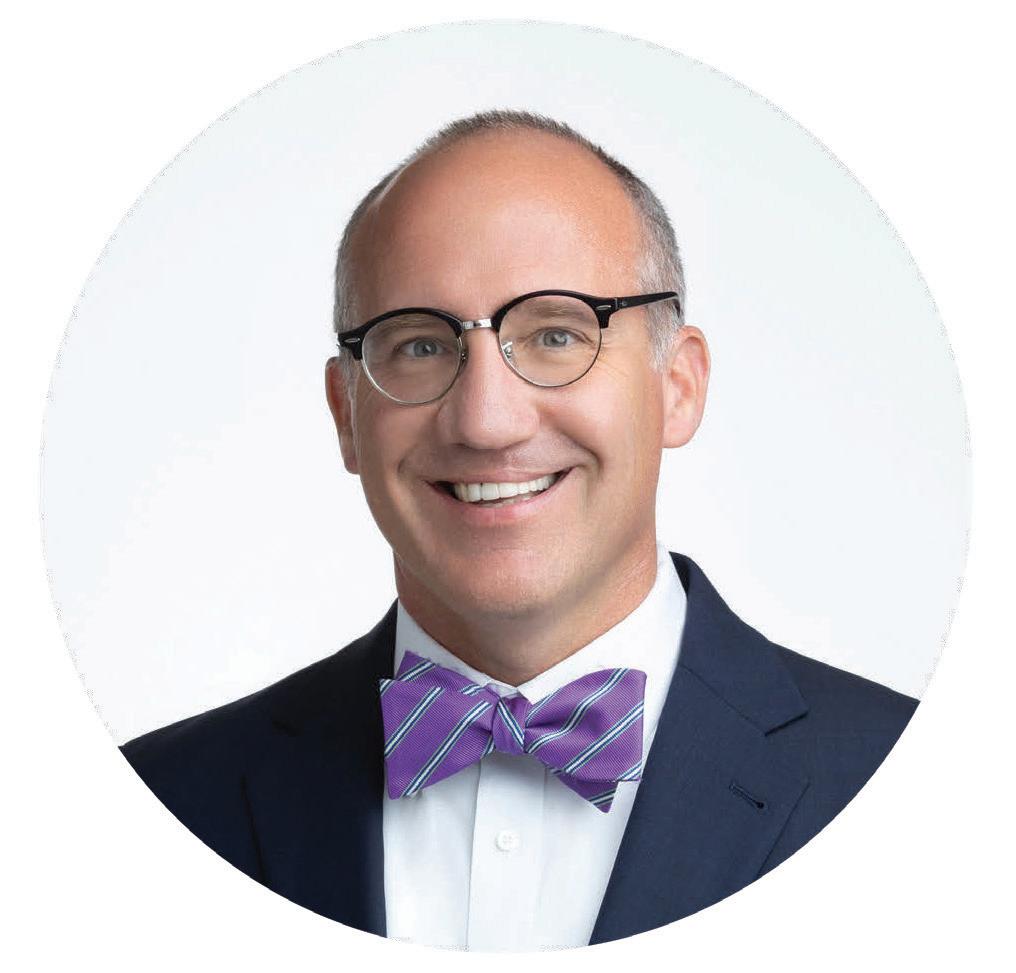
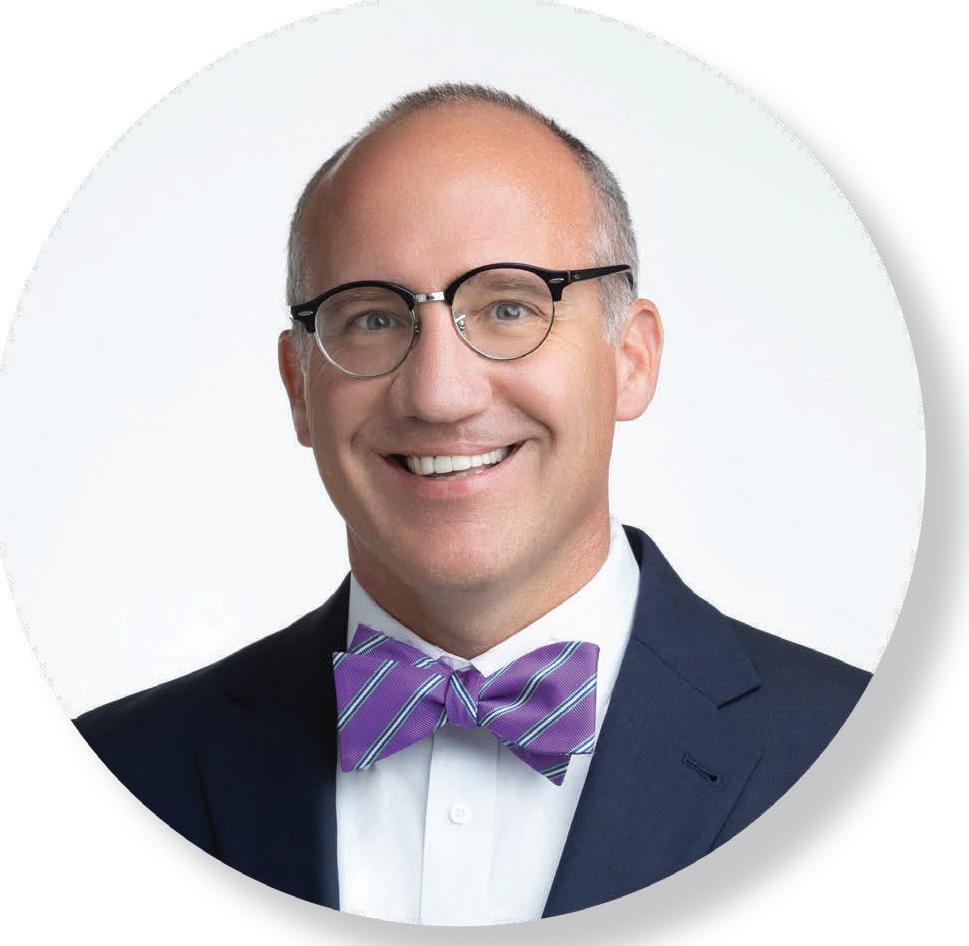


Ackerman & Ackerman, a leading law firm that specializes in representing property owners in eminent domain and condemnation actions, is pleased to announce the addition of Robert M. Kuhn to the firm as an associate.

Before joining Ackerman & Ackerman, Kuhn served as a law clerk in both federal and Michigan state courts at both the trial and appellate levels. Most recently, he spent over two years working as a law clerk for Justice Brian K. Zahra of the Michigan Supreme Court. In this role, Kuhn was exposed to a wide variety of cases — from property law and complex commercial and administrative disputes to amendments of the Rules of Civil Procedure and Professional Conduct. In addition to his time spent in the state’s capital, Kuhn served two years as a law clerk for Judge Robert H. Cleland of the U.S. District Court for the Eastern District of Michigan, where he gained extensive experience with federal court litigation, from complaint filings and summary judgment dispositions to hearings, conferences, and trials. While working in federal court, Kuhn was assigned to numerous sophisticated commercial and constitutional law disputes. Sterling Employment Law is excited to announce that attorney Jennifer L. Lord has joined the firm. Lord has over 20 years of litigation experience and has been recognized by her peers as a Michigan Super Lawyer. She achieved the highest ranking possible, AV, from MartindaleHubbell’s peer review and was named a top litigator by Crain’s Detroit Business and a “Woman in the Law” by Michigan Lawyers Weekly. Lord graduated with distinction from the University of Michigan with a degree in economics and cum laude from Wayne State University Law School.

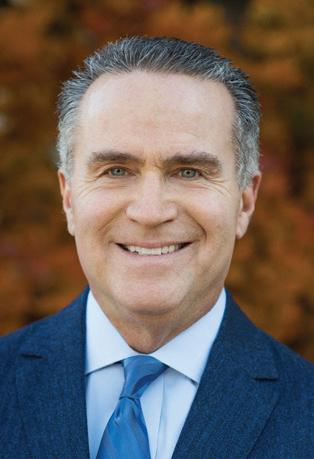
Jesse Reiter, president and founder of ABC Law Centers (Reiter & Walsh, P.C.), was speaker and panelist at the 40th annual Conference on Obstetrics, Gynecology, Perinatal Medicine, Neonatology, Multi-Specialties, and the Law from January 2 to 7, 2025. His topics included “Potential Harm in L&D: Where’s My Nurse?” and “Heart of the Matter ... Navigating Peripartum Cardiomyopathy.”
Reiter also spoke on HIE with injury but normal MRI, recognition and prevention of sudden unexpected postnatal collapse (SUPC), interventions for abnormal uterine contraction patterns, timing of late preterm delivery in high-risk cases, and the vital role of nurses in advocating for timely interventions in labor and delivery.
Beier Howlett is thrilled to announce that attorney Matthew Haupt has joined the firm as an associate specializing in estate planning and probate. He brings with him an invaluable set of skills, abilities, and expertise. He is passionate about advancing public education and protecting civil rights and is dedicated to education equity and justice. He is proficient in legal research and policy analysis. Before attending law school, Haupt spent 20 years working in advertising and marketing.
Haupt has been a Troy School District board member since January 2023. He is an advocate for equitable education policies and procedures that improve student outcomes across Troy’s diverse student body. He collaborates with educators, parents, and community members to develop initiatives promoting deep learning within district classrooms.
Let us share your great news here in Laches and on social media. Simply send a short announcement or press release to jquick@ocba.org along with a high-resolution photo. Inclusion in In Pro Per is free and exclusive to OCBA members.
*The OCBA does not publish announcements about recognition in Super Lawyers or “best of” lists due to the large number of members who earn that recognition each year. Other exclusions may apply.
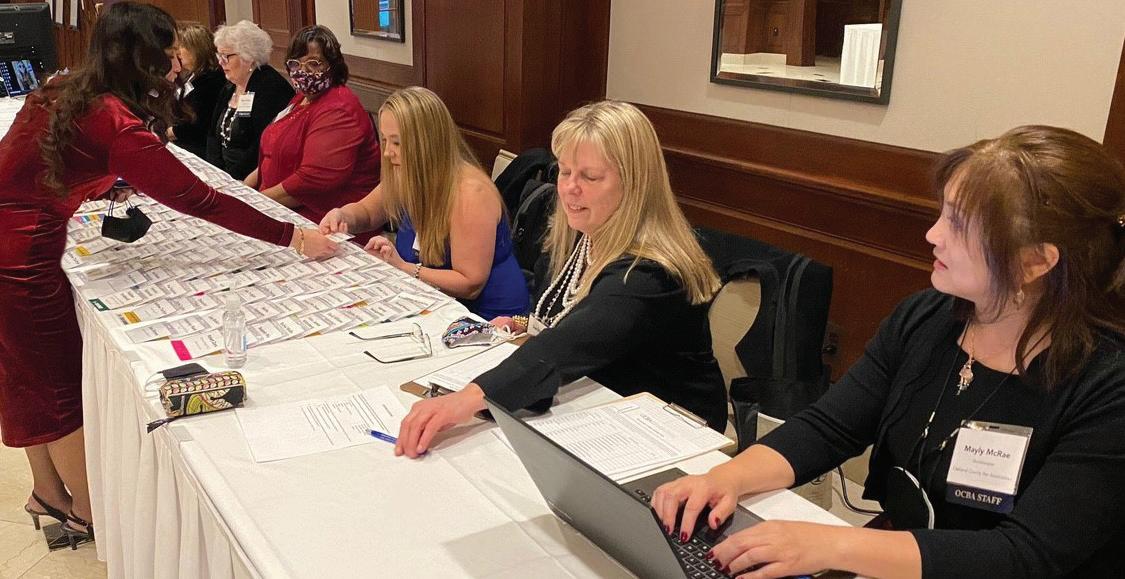
Executive Director
Jennifer Quick (jquick@ocba.org)
Deputy Director
Katie Tillinger (ktillinger@ocba.org)
Finance Director
Susan Maczko (smaczko@ocba.org)
Professional Development Director
Shanay Cuthrell (scuthrell@ocba.org)
Court Services Manager
Cristin Doble (cdoble@ocba.org)
Marketing Communications Specialist
MB Cairns (mcairns@ocba.org)
Bookkeeper
Mayly McRae (mmcrae@ocba.org)
Administrator – Court and Public Services
Janise Thies (jthies@ocba.org)
Administrator – Events and Member Services
Kari Ross (kross@ocba.org)
Administrator – LRS and Membership
Geni Fritch (gfritch@ocba.org)
Administrator – Laches and Foundation
Lori Dec (ldec@ocba.org)


TimothyMasterswasonlyfifteenwhenhestumbledacrossthemutilatedcorpse ofPeggyHettrickinafieldonhiswaytoschool.Almostassoonasthepoliceset eyesonhim,theyweresurehewasthekiller—evenwithnothingbutacollection ofgorydrawingshe’dcreatedasateenagehorrorfanasevidence. Fortenyearstheyhoundedhim,until—withthehelpofanastoundingamount ofmisconduct—theyfinallysucceededinputtinghimbehindbars. InDrawntoInjustice,Timrecountshisjourneytoexoneratehimselfforacrime hedidn’tcommitand,intheprocess,laysbarethecorruptionthatenabledthe criminaljusticesystemtorailroadaninnocentman.




Unless otherwise indicated, please call (248) 334-3400 for assistance.
Address Changes
Billing
Board of Directors ....................................................
Kari Ross
Mayly McRae
Jennifer Quick
Case Evaluator Applications ..............................................
Committees
District Court Case Evaluation
Event Photos
Finance
Inns of Court
Judicial Candidate Fora
Laches Magazine
Lawyer Referral Service – (248) 338-2100
Member Illness & Death Notification
Membership
New Lawyer Admissions
News Releases
Oakland County Bar Foundation
OCBA Mediation Service
OCBA Policies
Pro Bono Mentor Match Program
Professional Development/CLE
Room Rental Reservations
Speakers Bureau
Kari Ross
Katie Tillinger
Cristin Doble
MB Cairns
Susan Maczko
Shanay Cuthrell
Janise Thies
Jennifer Quick
Geni Fritch
Katie Tillinger
Katie Tillinger
Katie Tillinger
MB Cairns
Katie Tillinger
Cristin Doble
Jennifer Quick
Janise Thies
Shanay Cuthrell
Kari Ross
Janise Thies
Volunteer Opportunities ...............................................
Website
Janise Thies
Jennifer Quick














Timothy Masters was only fifteen when he stumbled across a mutilated corpse lying in a field. For ten years, the police hounded him until – with the help of an astounding amount of misconduct – they finally succeeded in putting him behind




journey to exonerate himself for a crime he didn’t commit.















Julie L. Chantiny
Amanda Eschendal
Michelle Gomes
Garry M. Greenberg
Charlotte Jolly
Robert M. Kuhn
Haley Elizabeth Lyckman
Eli Ravid
Tyler Repke
Bryan M. Robbins
Caitlin K. Urisko




On December 5, 2024, the OCBA hosted its highly anticipated Holiday Gala at the elegant Townsend Hotel in Birmingham. This annual seasonal social event welcomed nearly 400 members and guests for an evening of camaraderie and celebration. Attendees reveled in the festive ambiance, enjoying lively music, an impressive selection of hors d’oeuvres, and indulgent treats, making the night truly unforgettable.
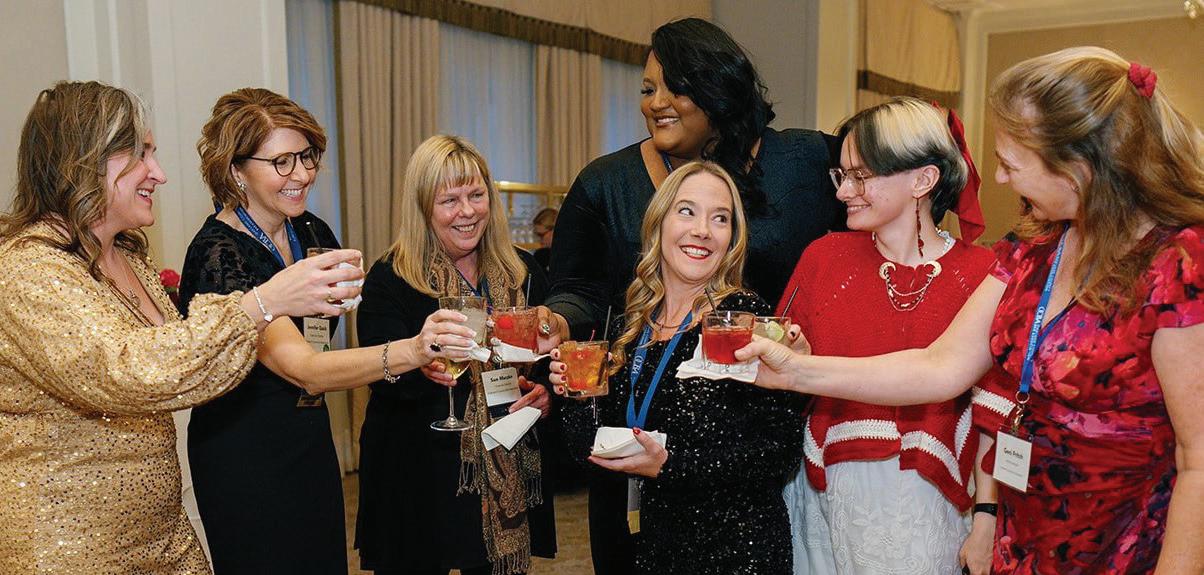


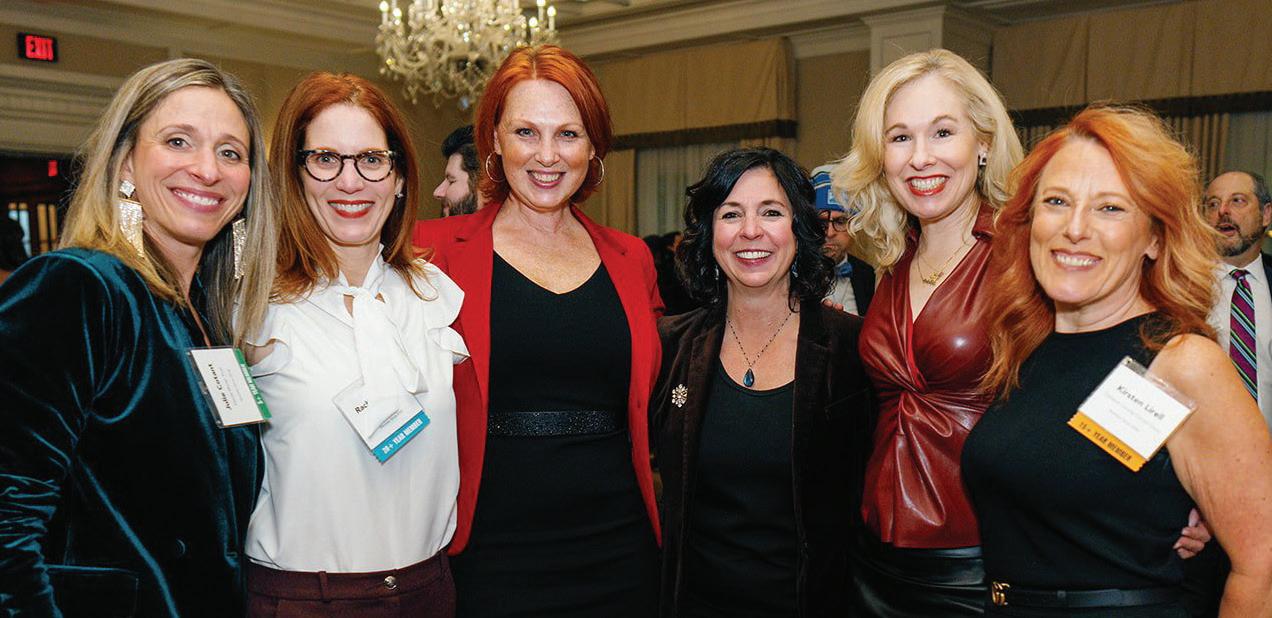
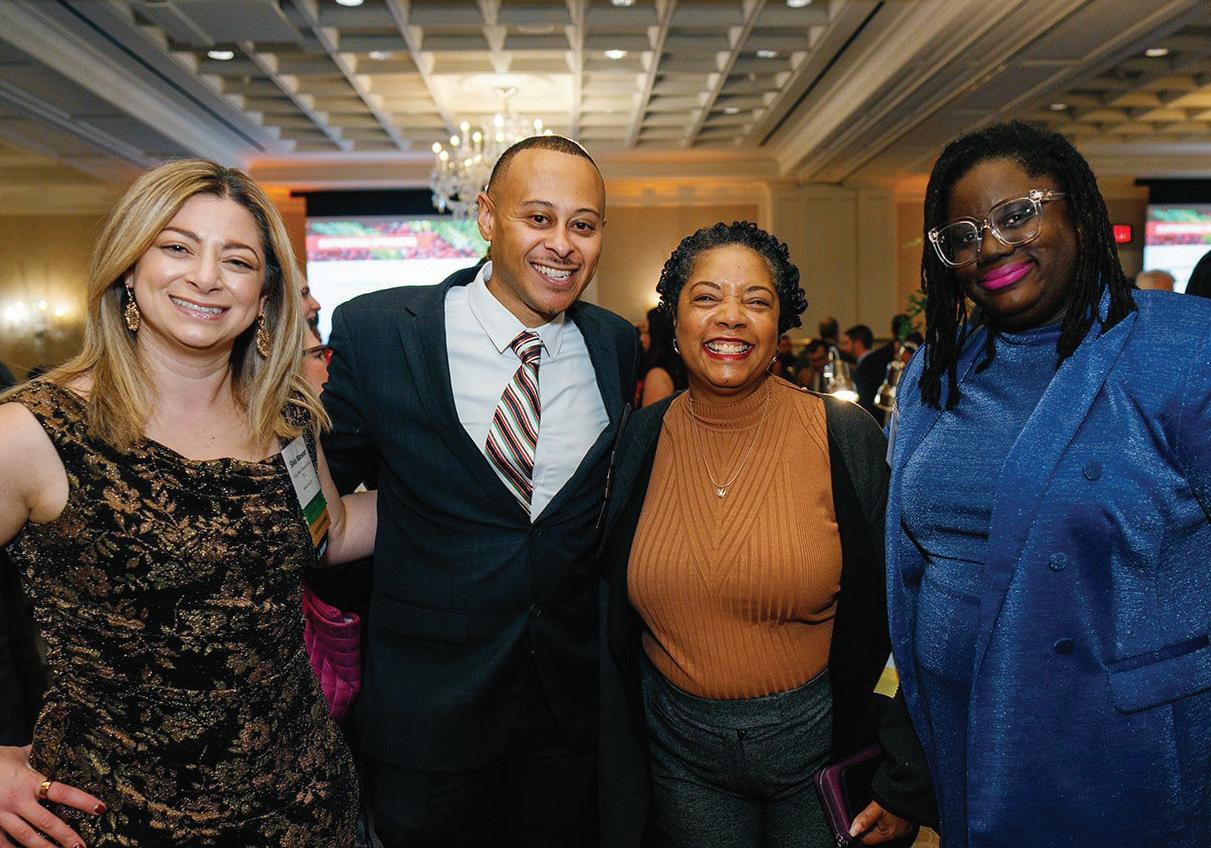





Sam Morgan & Greg Jones have a team of Employment Lawyers with decades of experience providing advice, counsel and representation to Employees and Employers in a wide variety of occupations, for:
• Wrongful discharge cases, including breach of employment contract, discrimination, harassment and retaliation
Non-payment of compensation disputes, including commission, bonus and incentive compensation arrangements, and FLSA violations
Enforcement of equity award agreements and minority shareholder rights
Defending against mobility-killing non-compete and non-solicitation contracts
• Separation agreement reviews and severance negotiations
• Drafting employment contracts
• HR counseling, defending against government investigations






Our team includes Senior Associate, Barbara Urlaub*, and Of counsel attorneys, David Kotzian*, Donald Gasiorek*, Raymond Carey *, and Paul Hines *2024 Michigan Super Lawyers Honorees
Toll Free Phone: 888.421.9704
Local: 248.865.0001
Locations: Farmington Hills, Sterling Heights, Downriver w ww.work-lawyers.com
